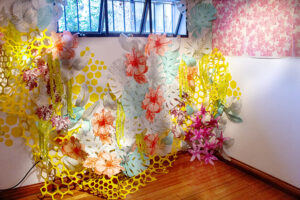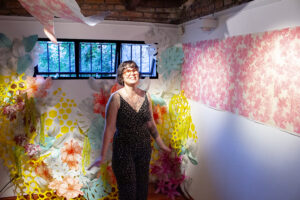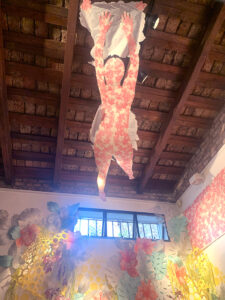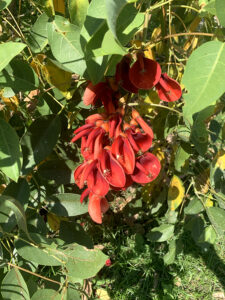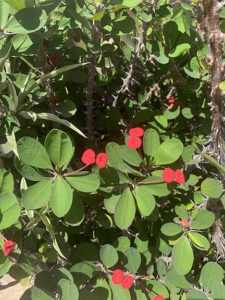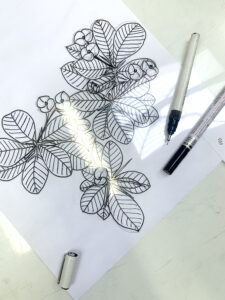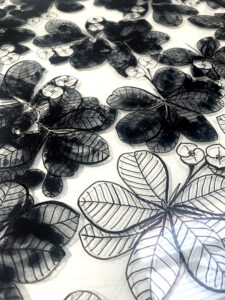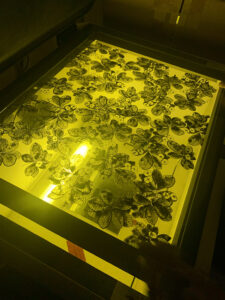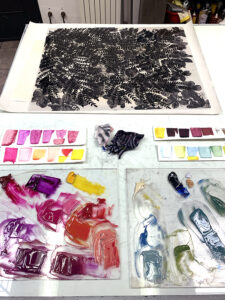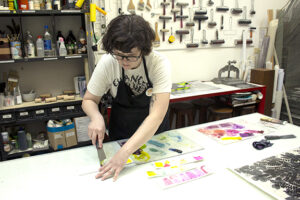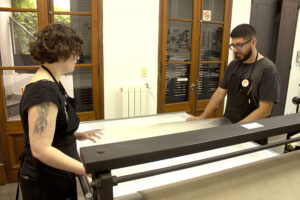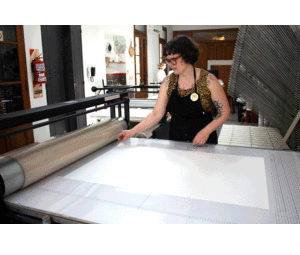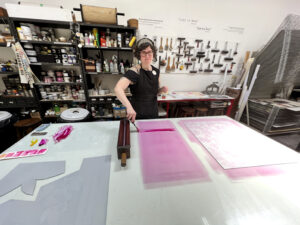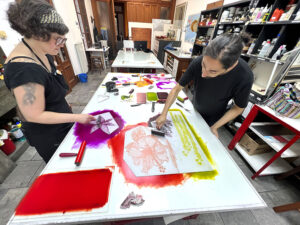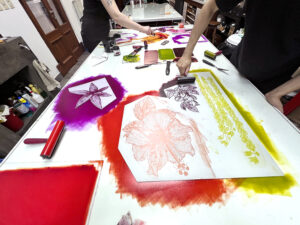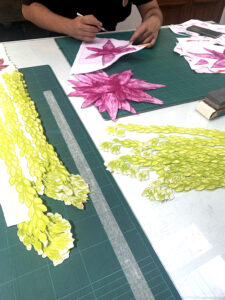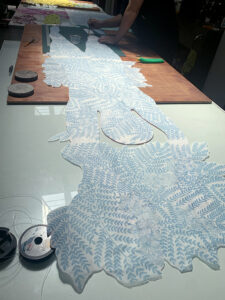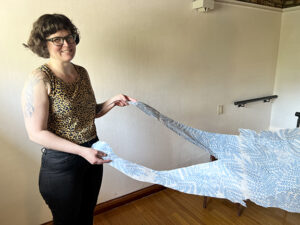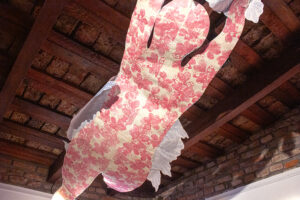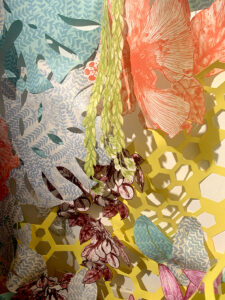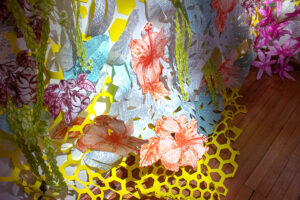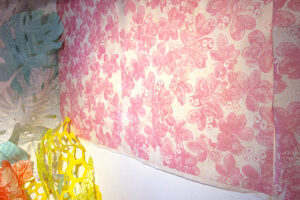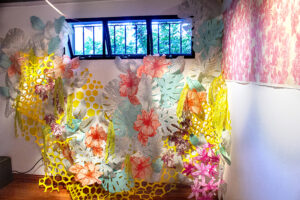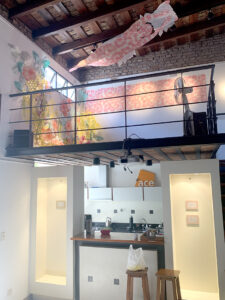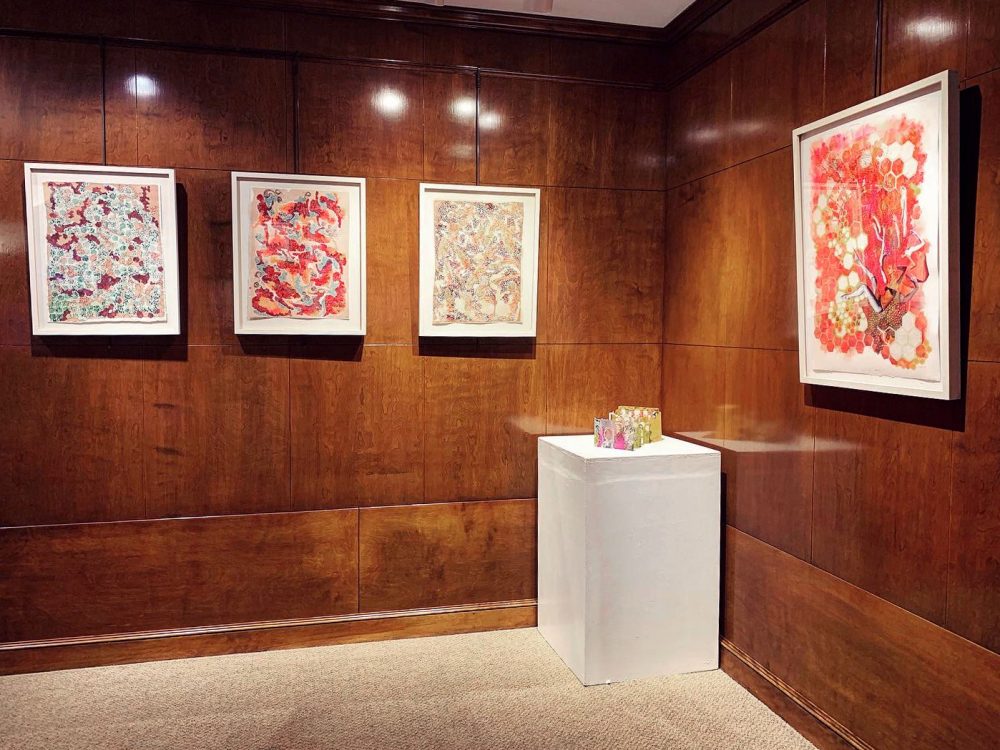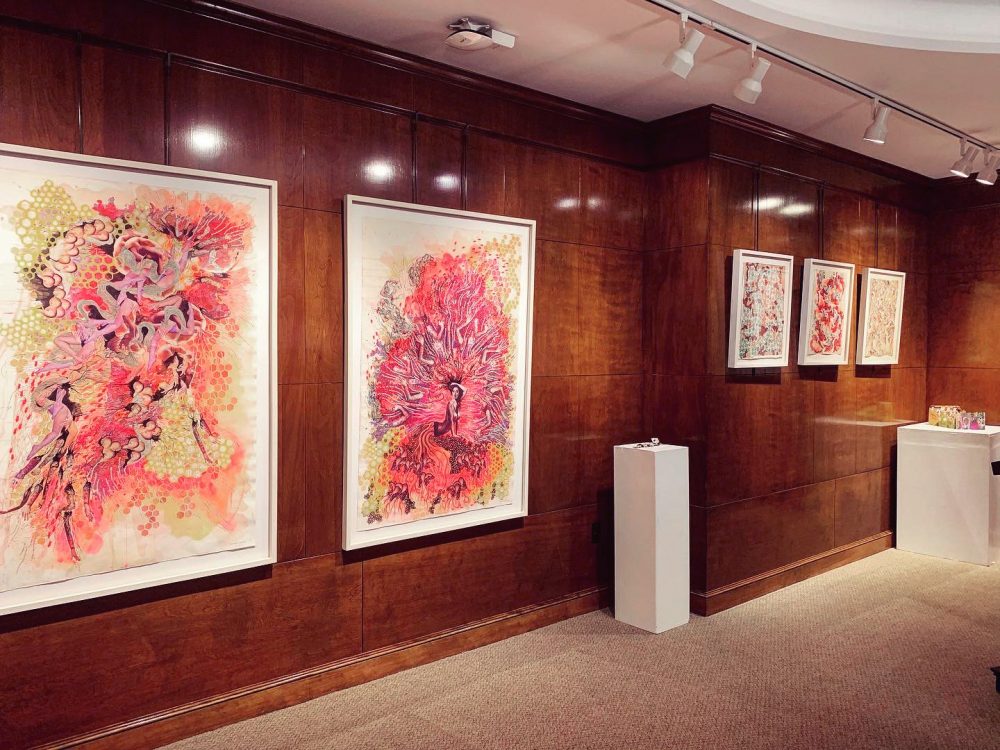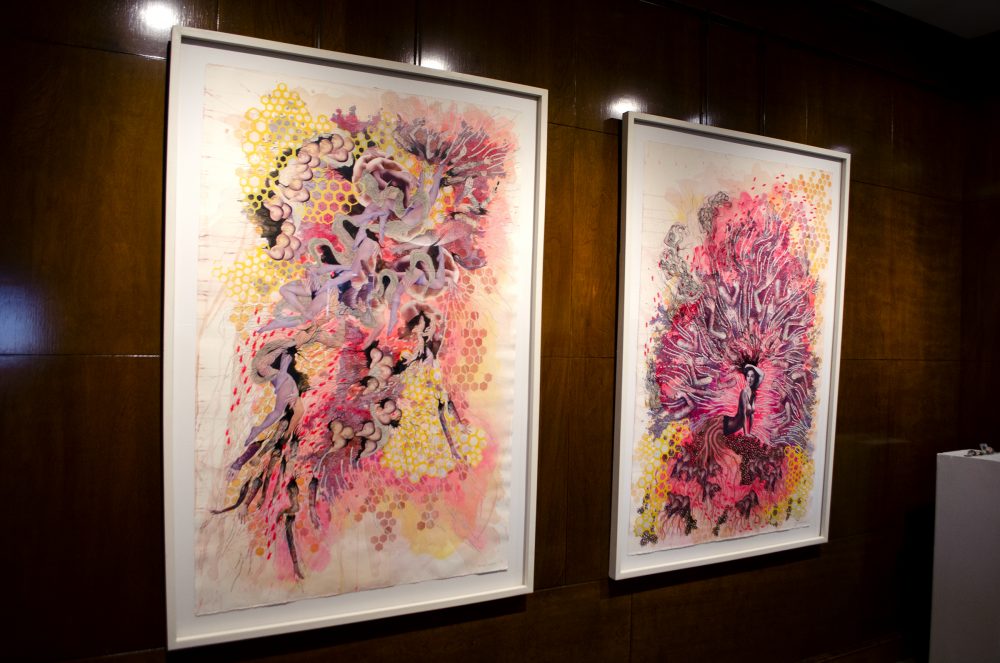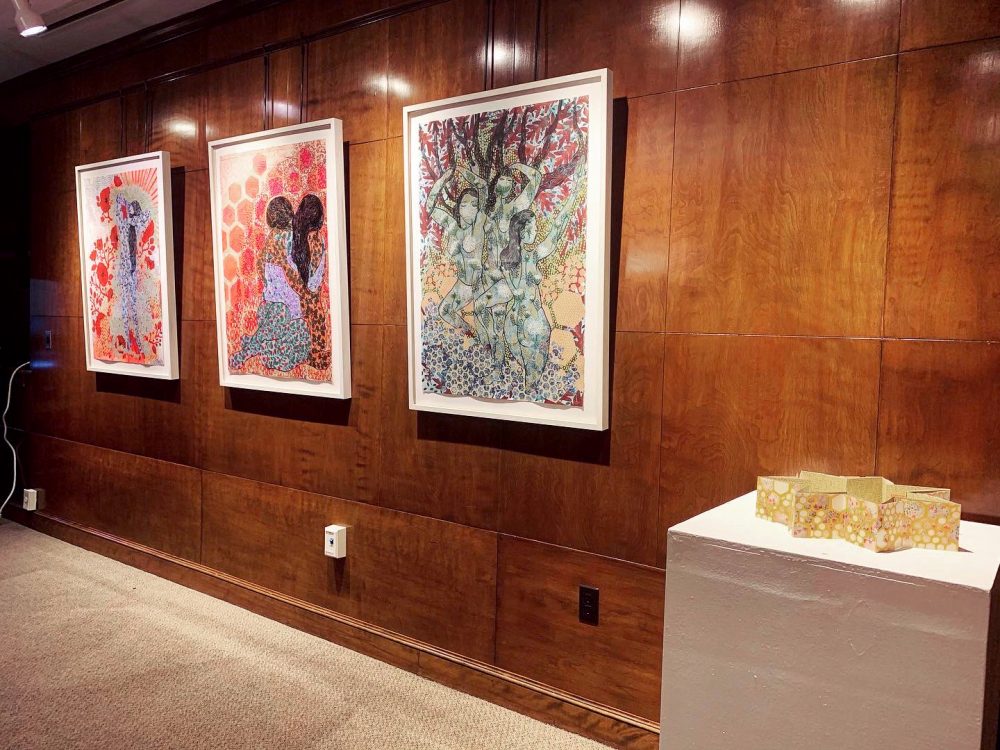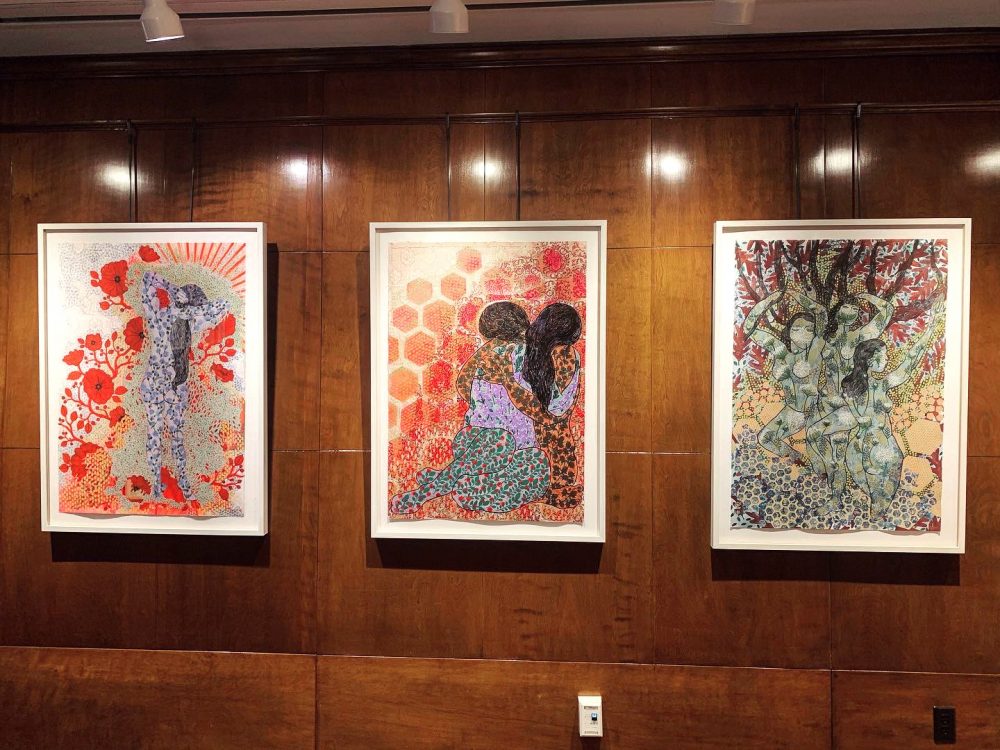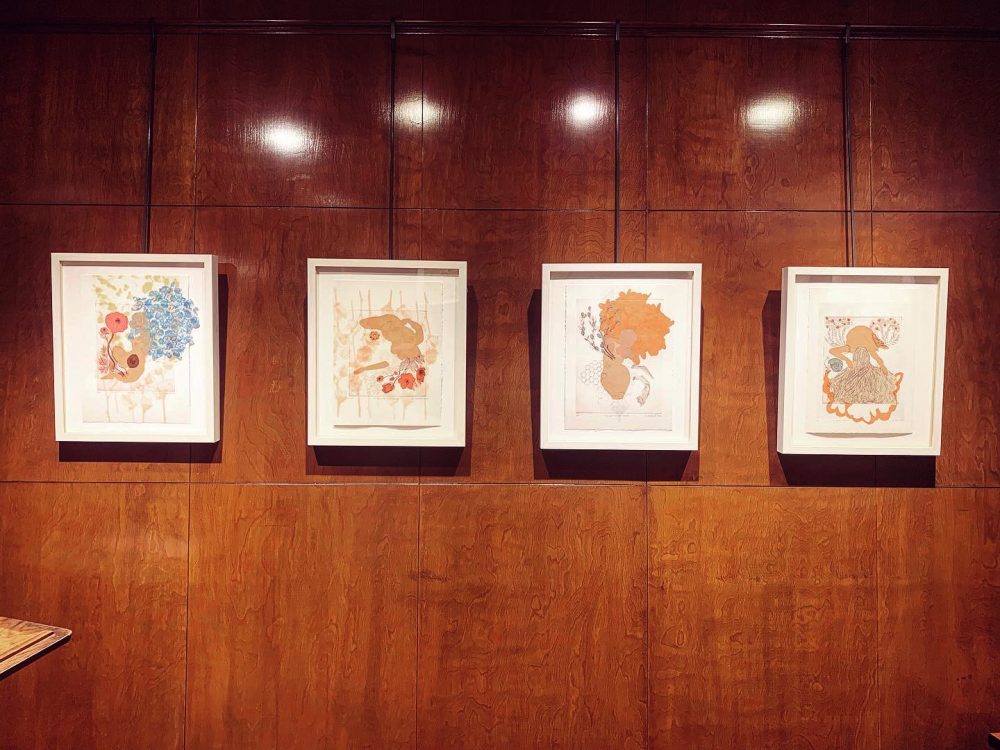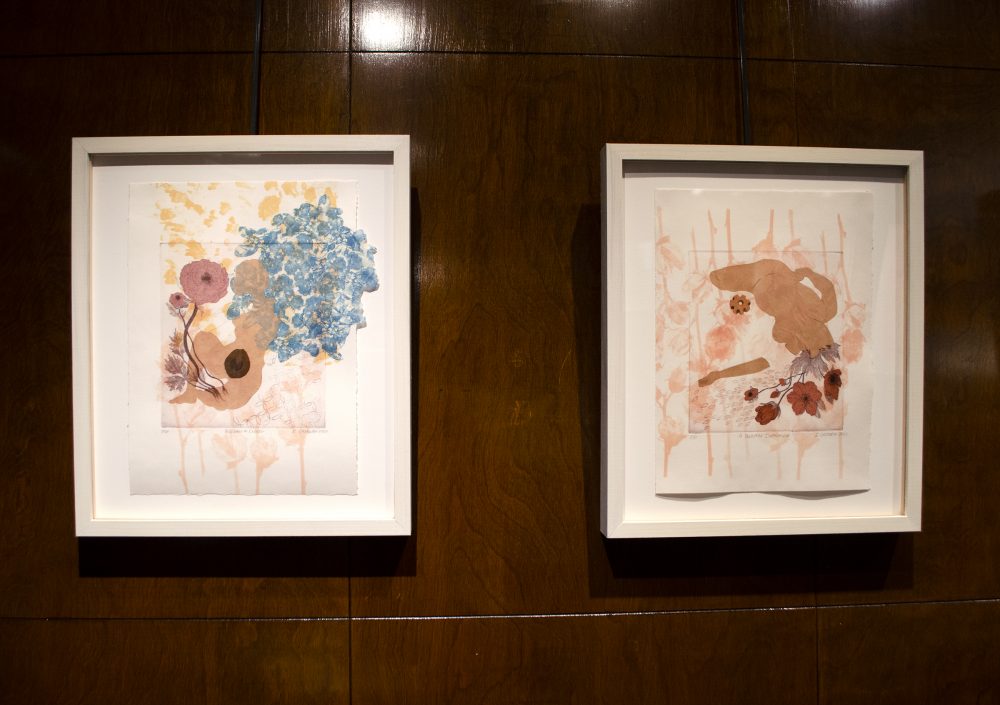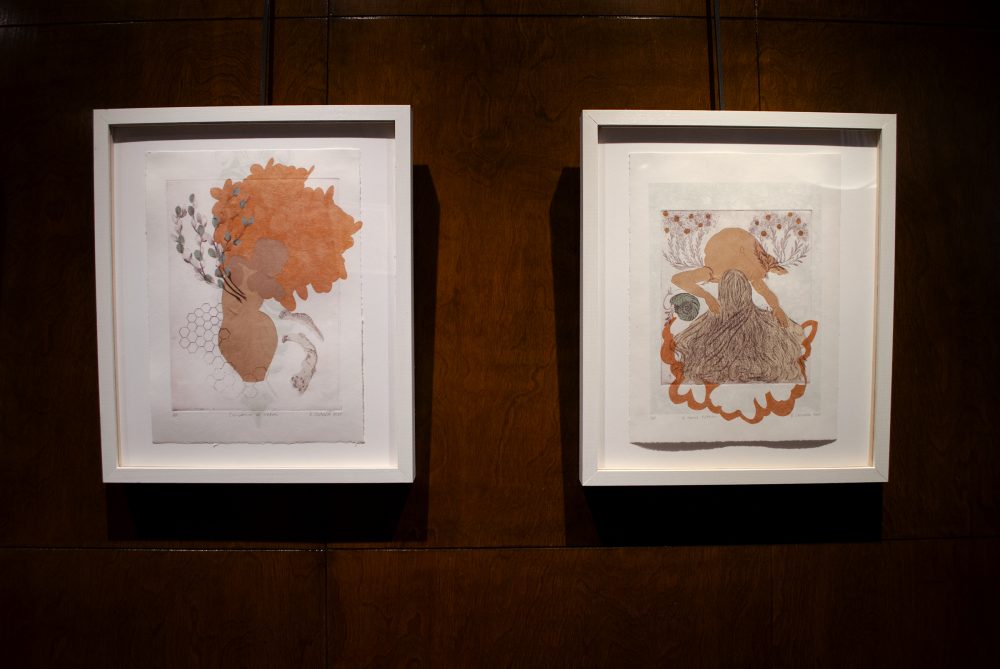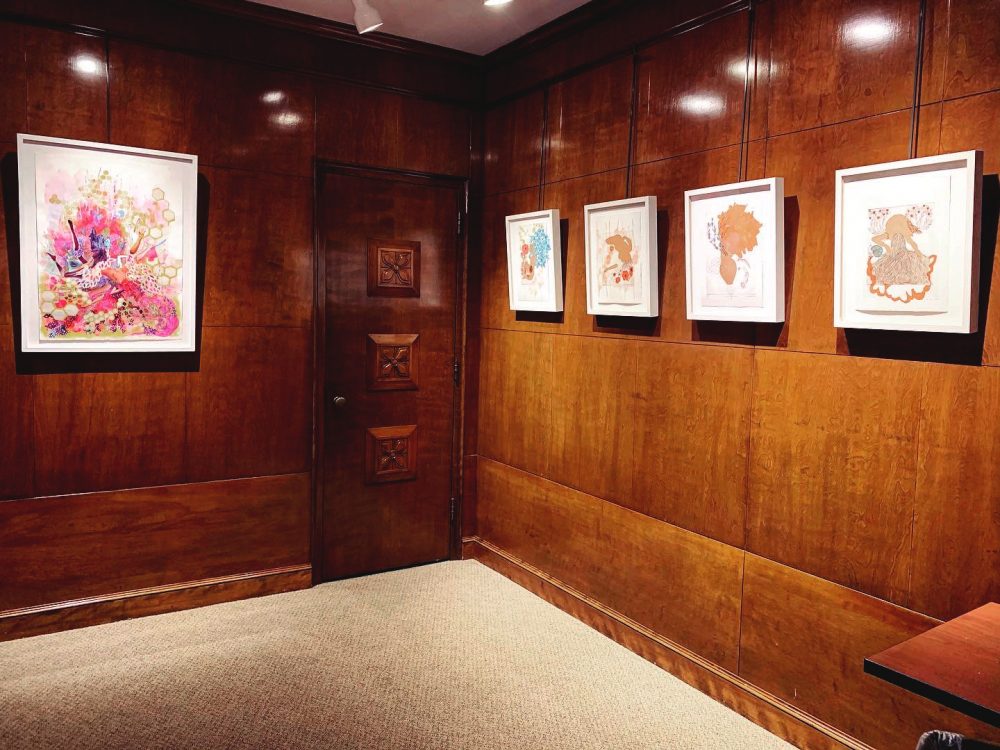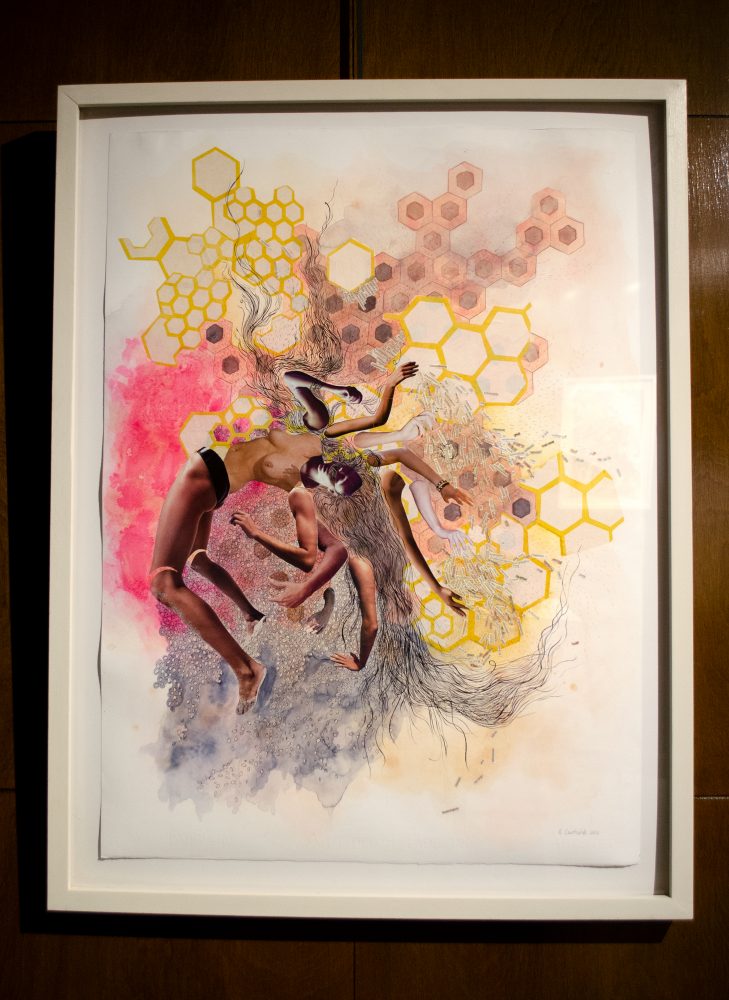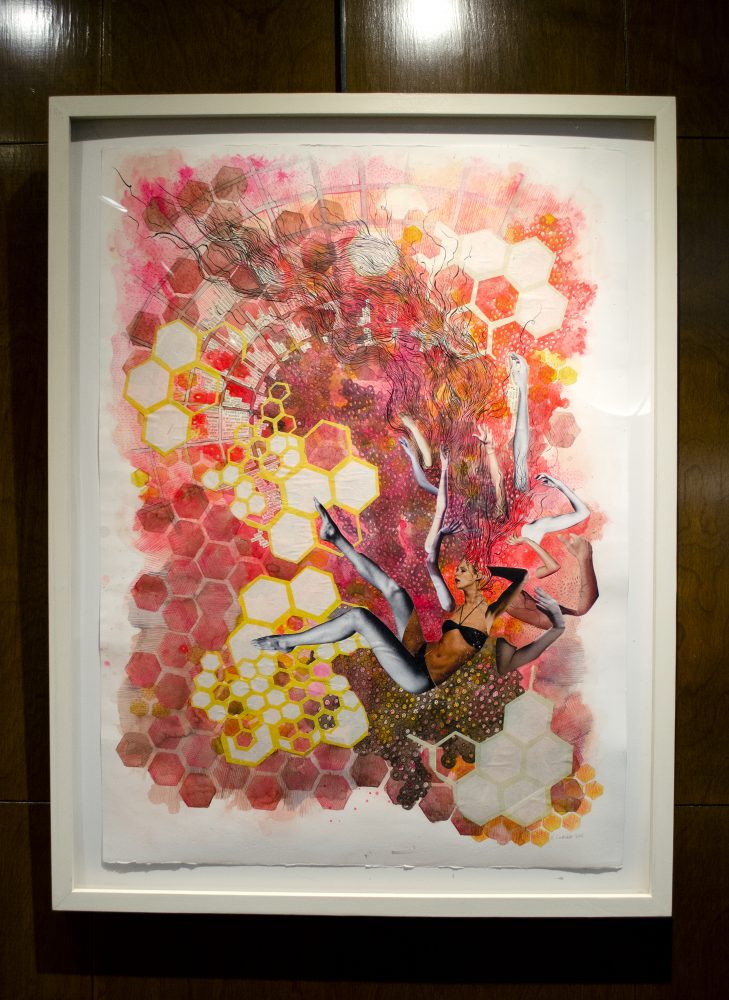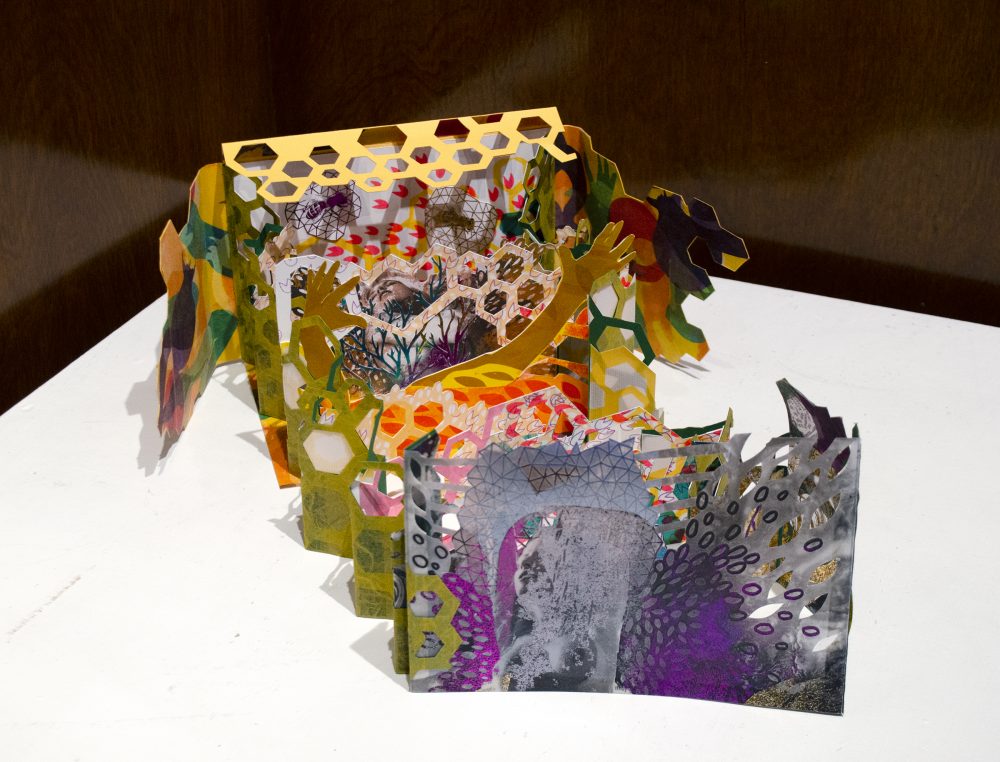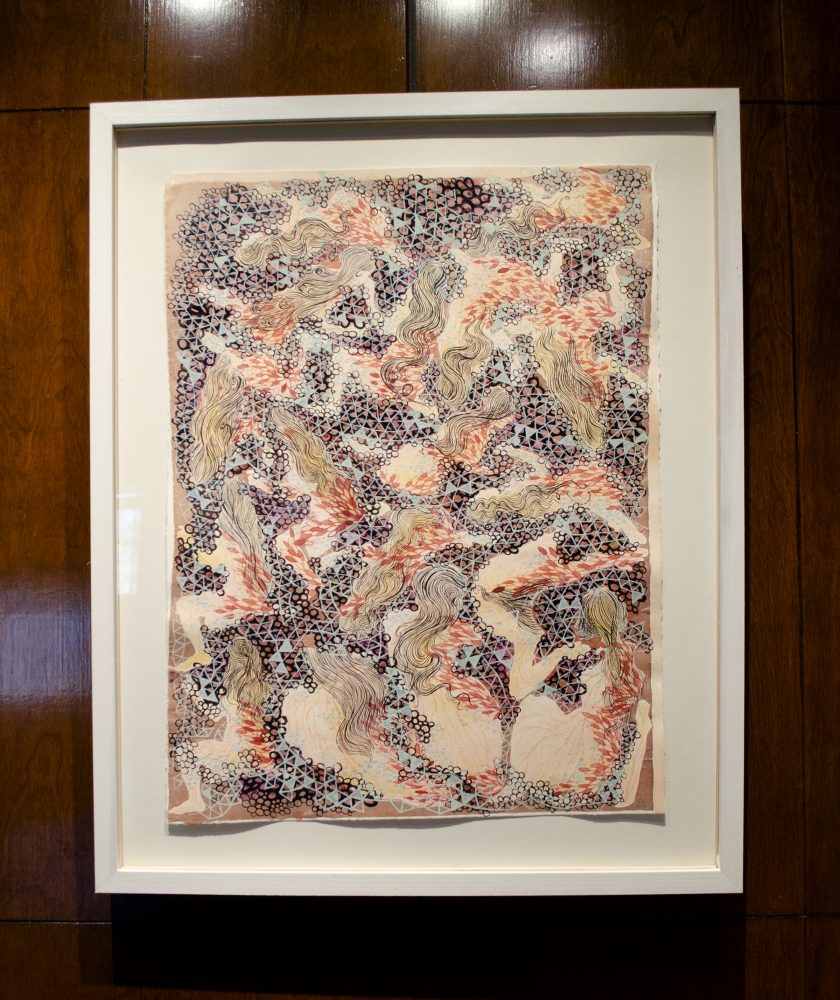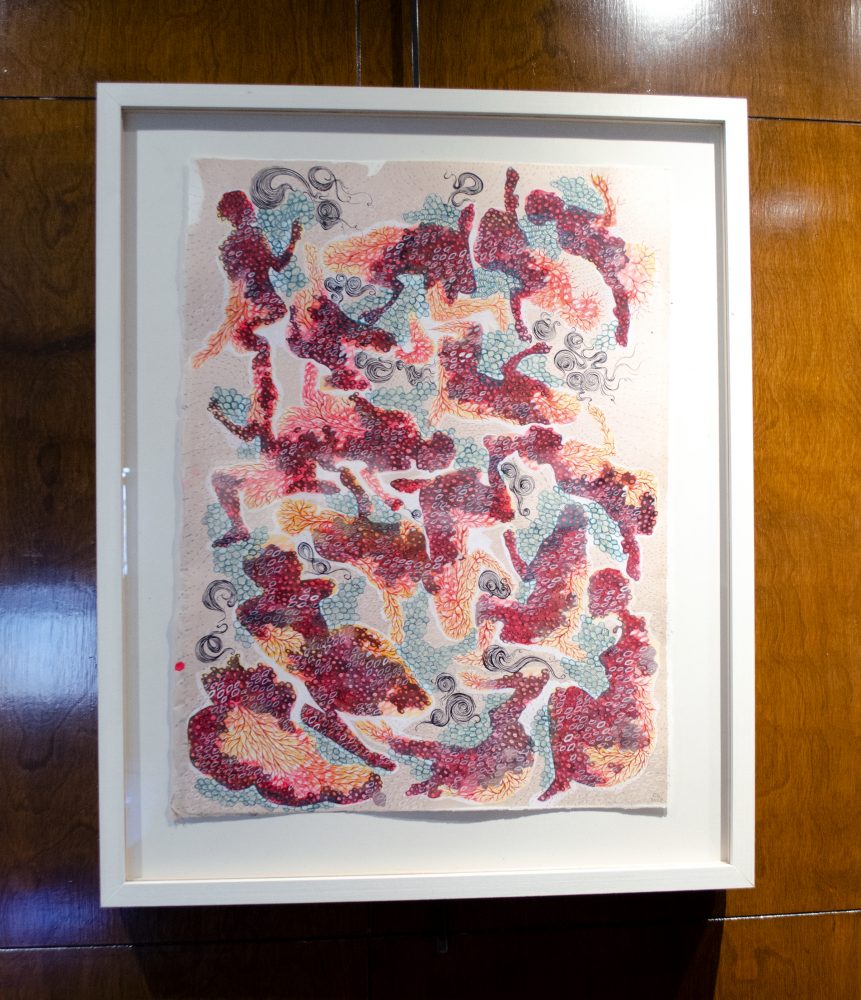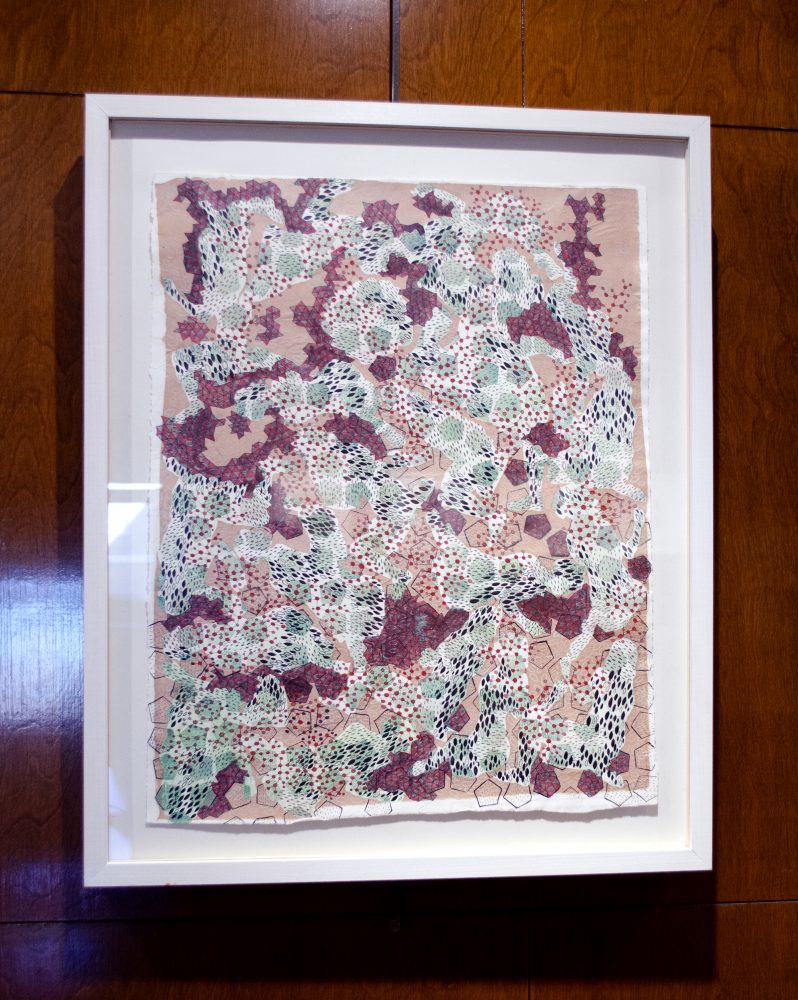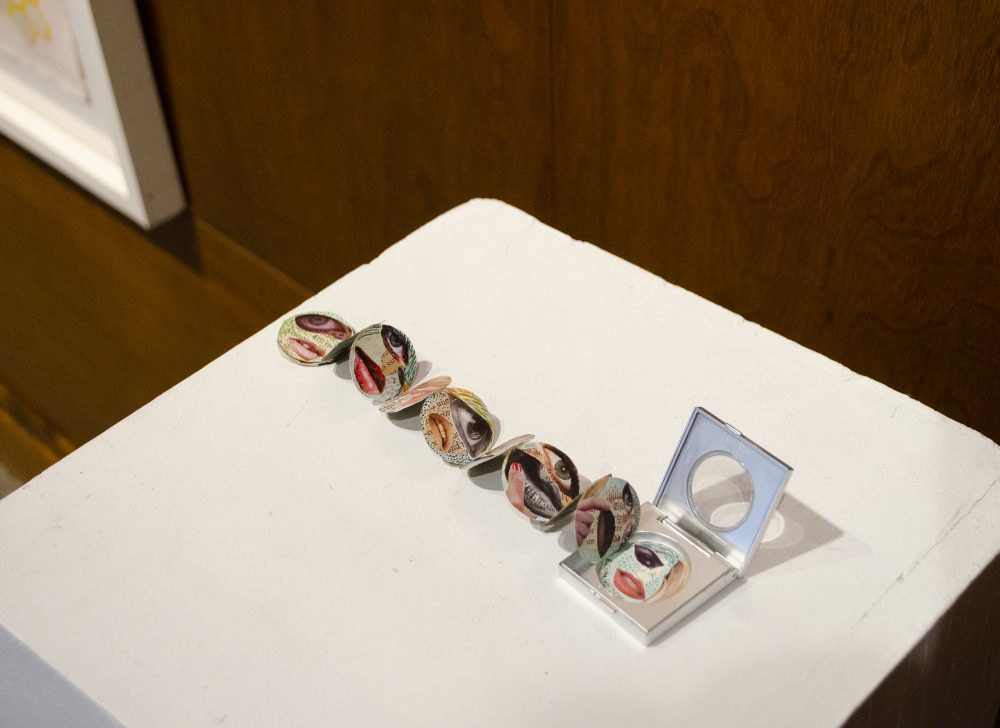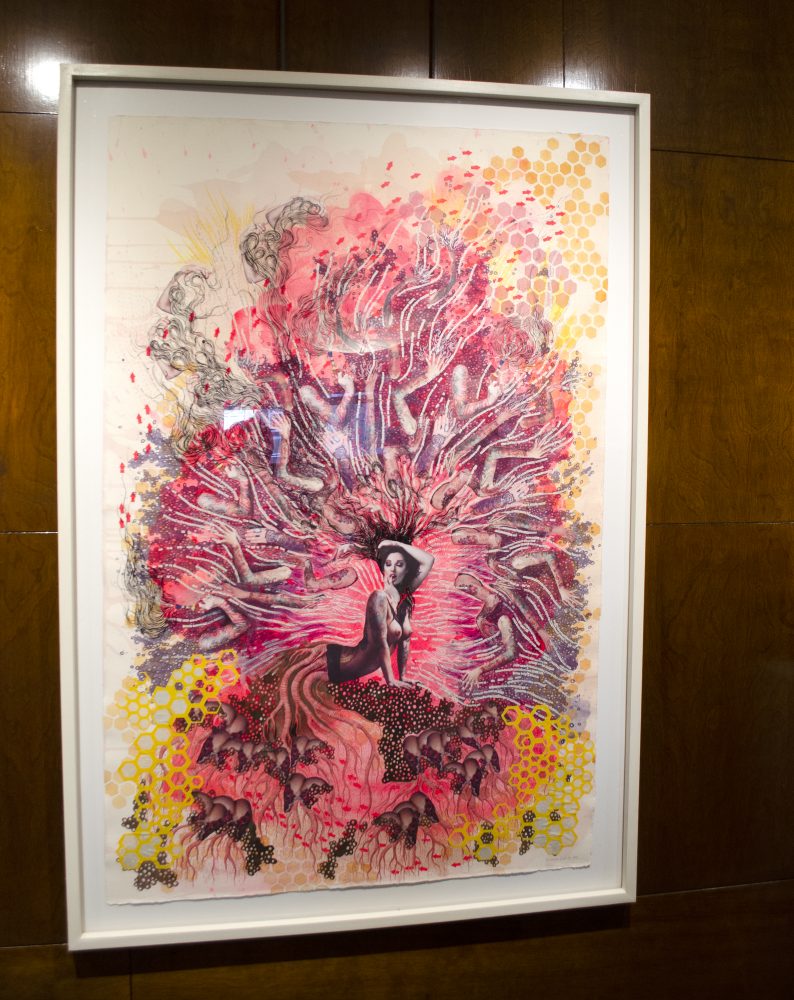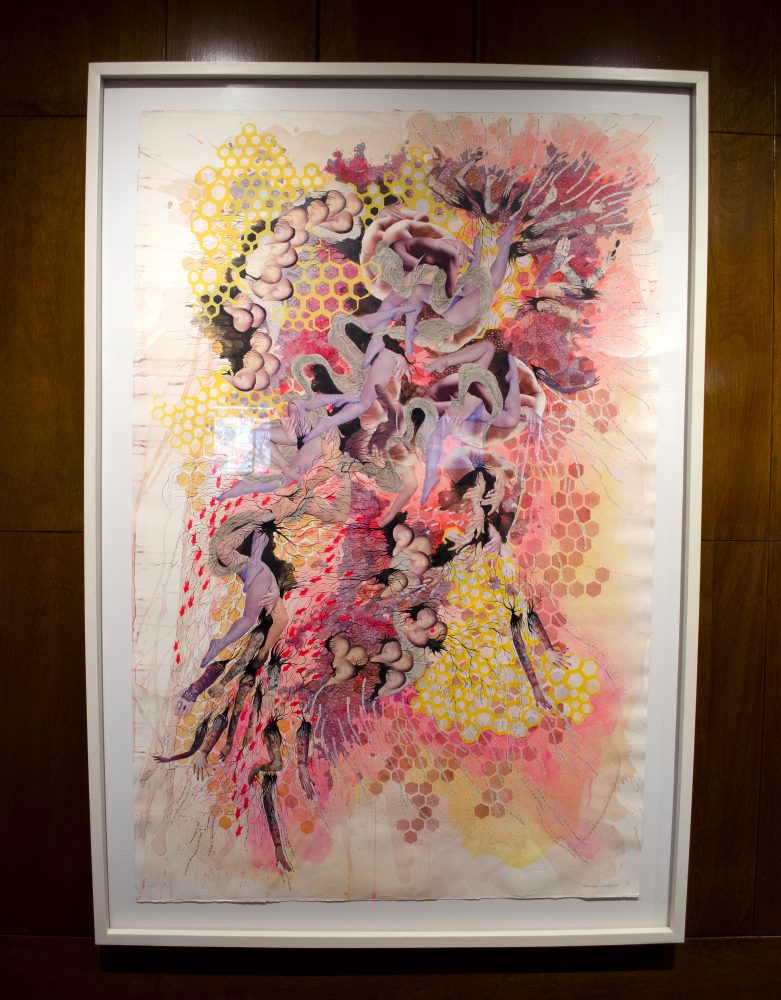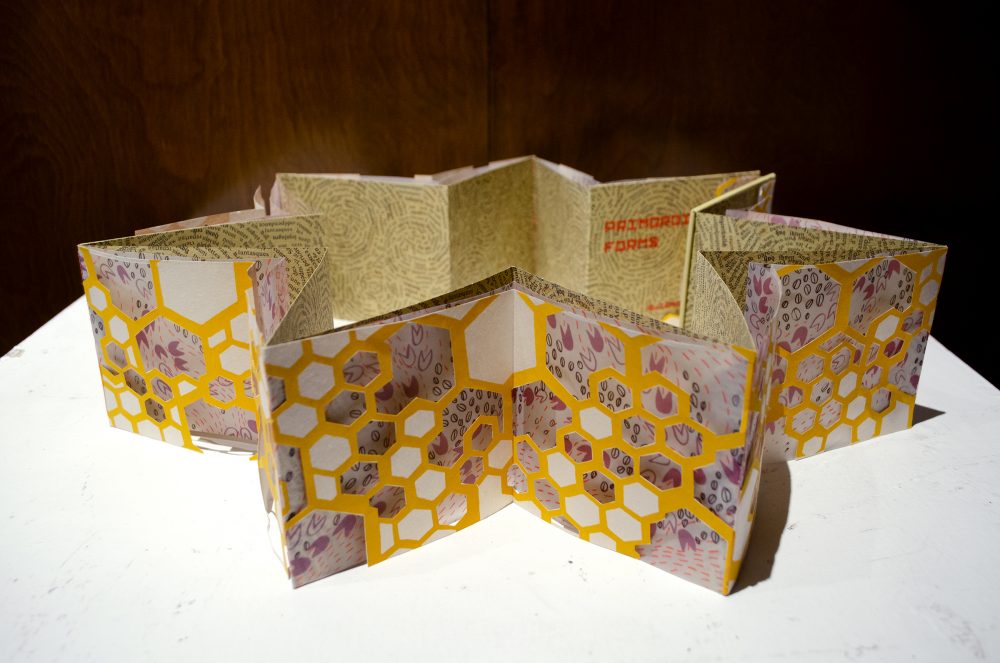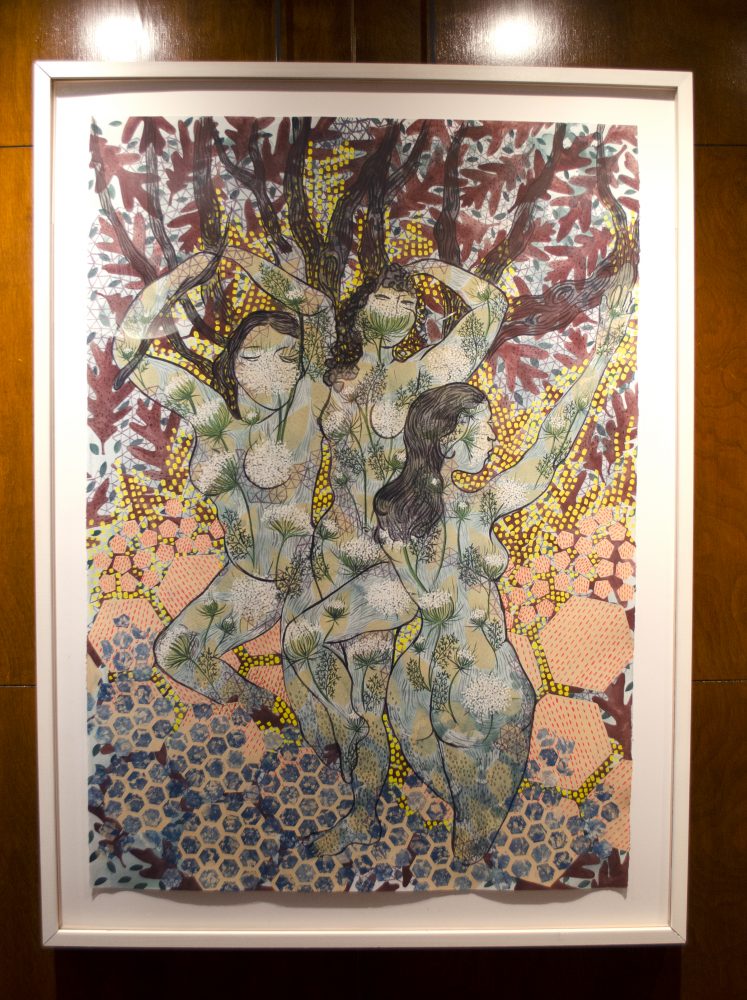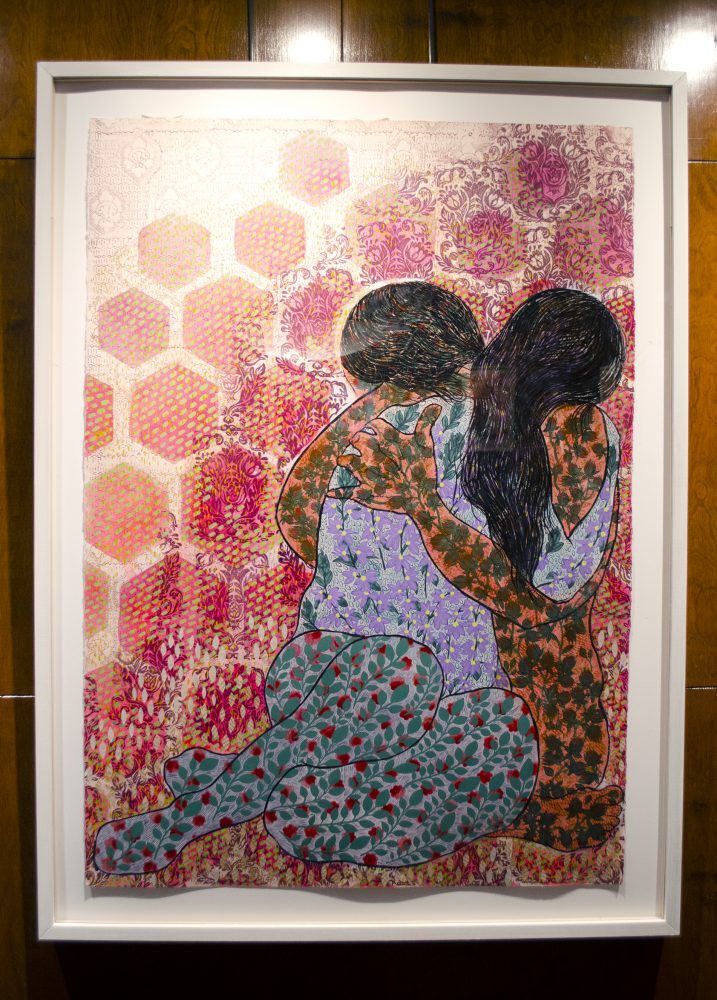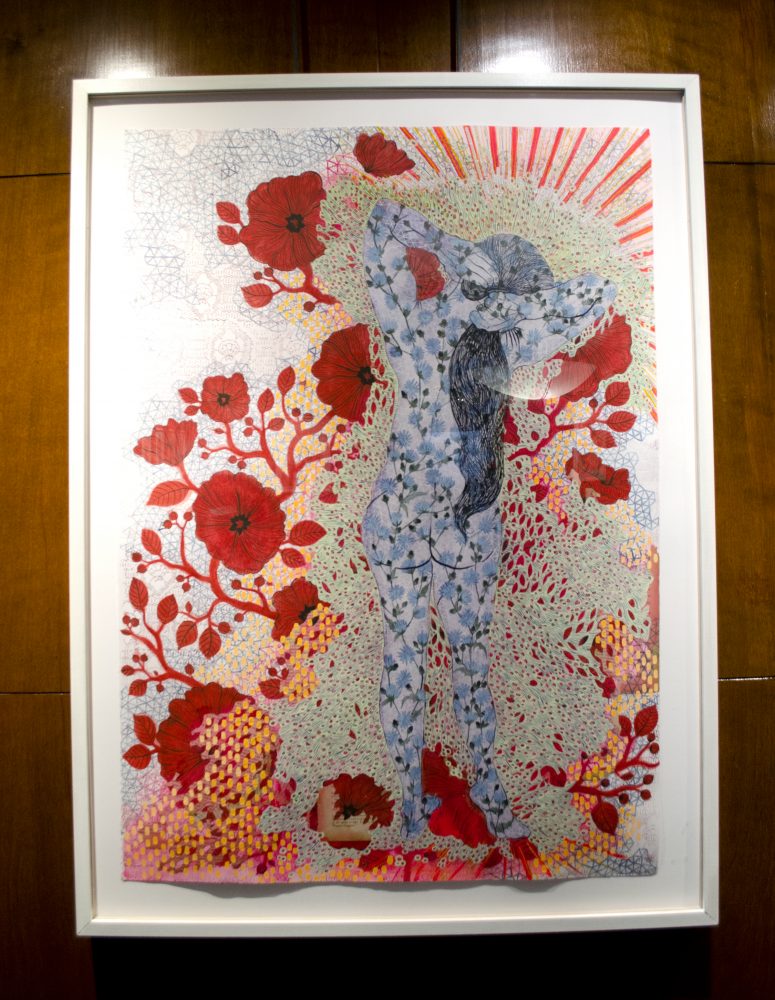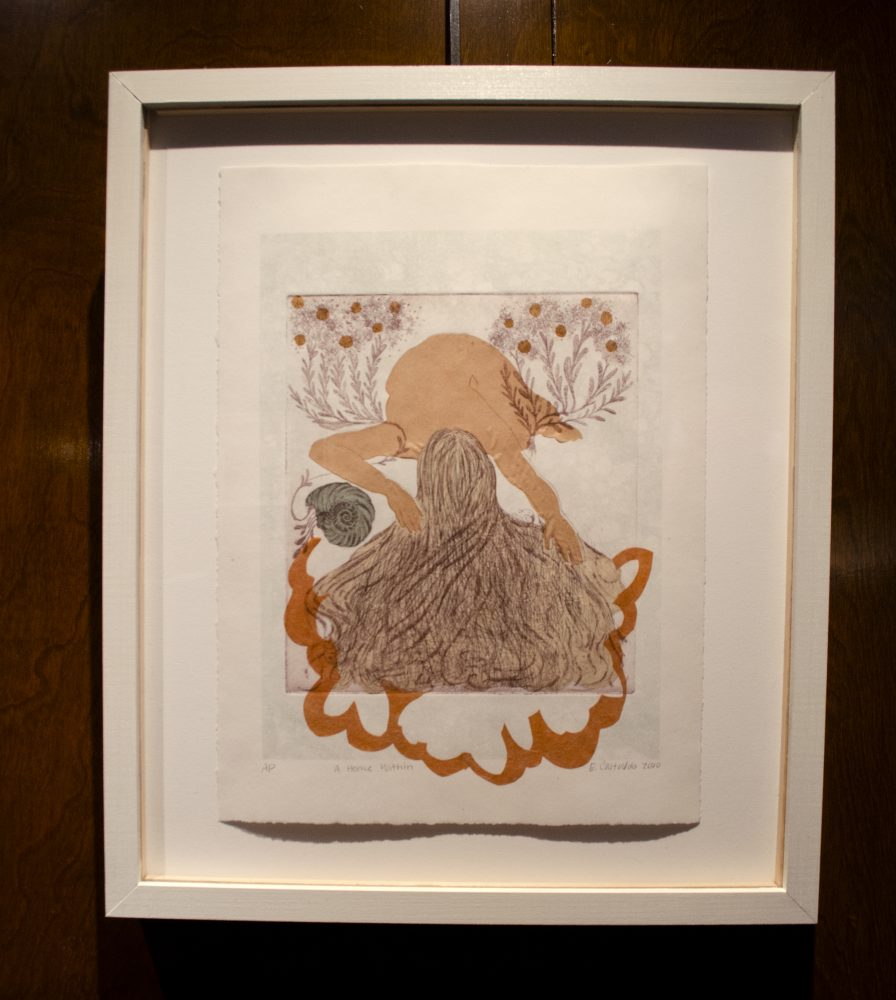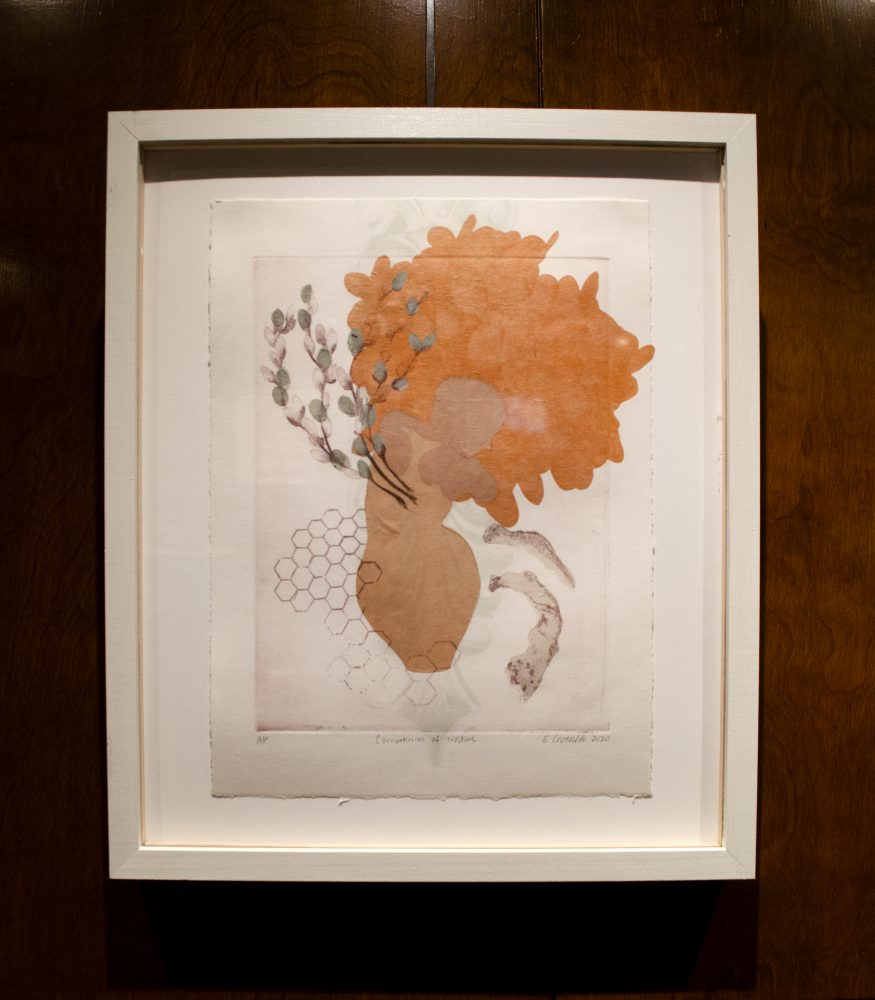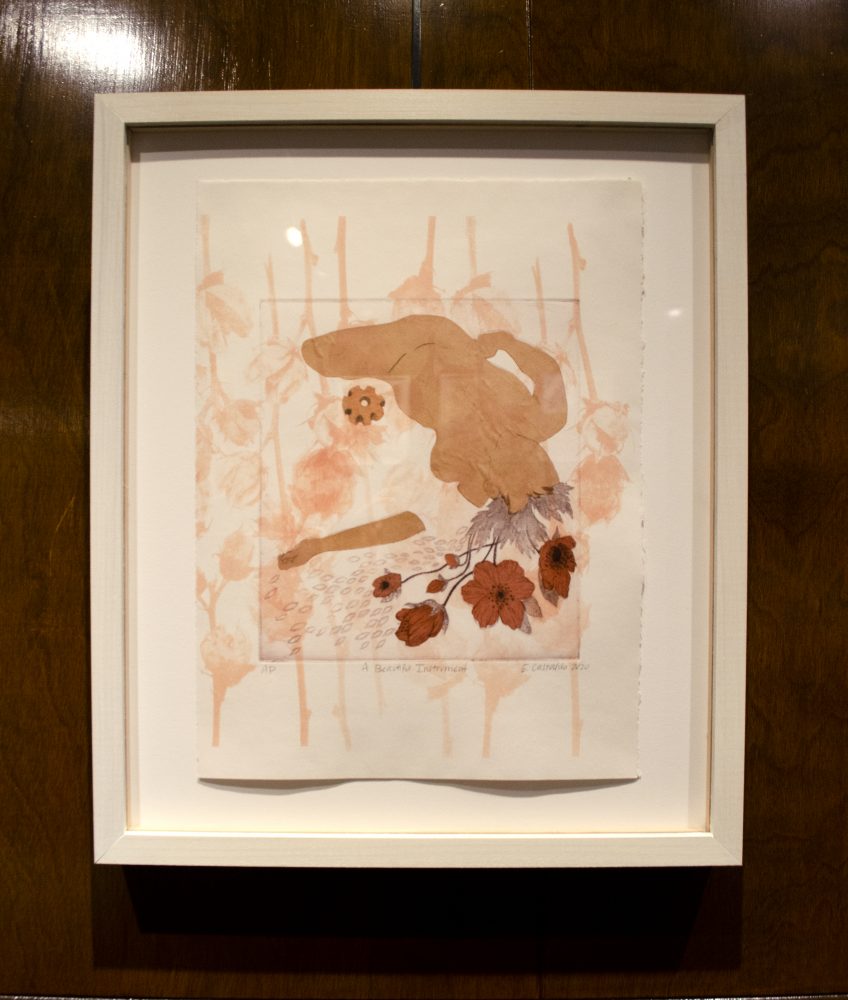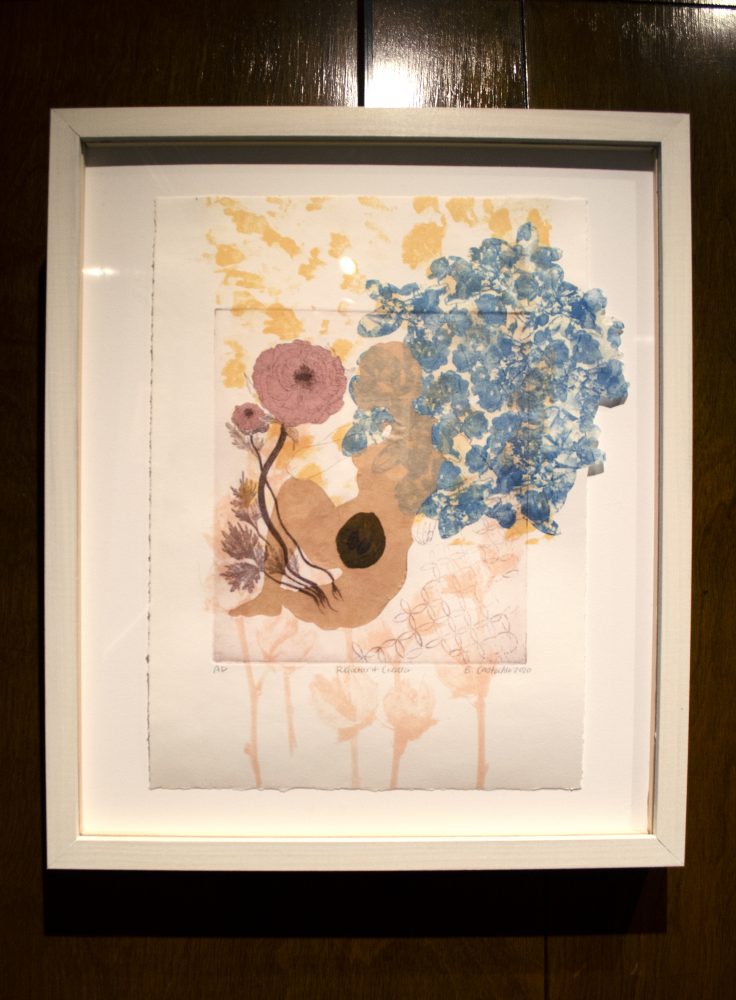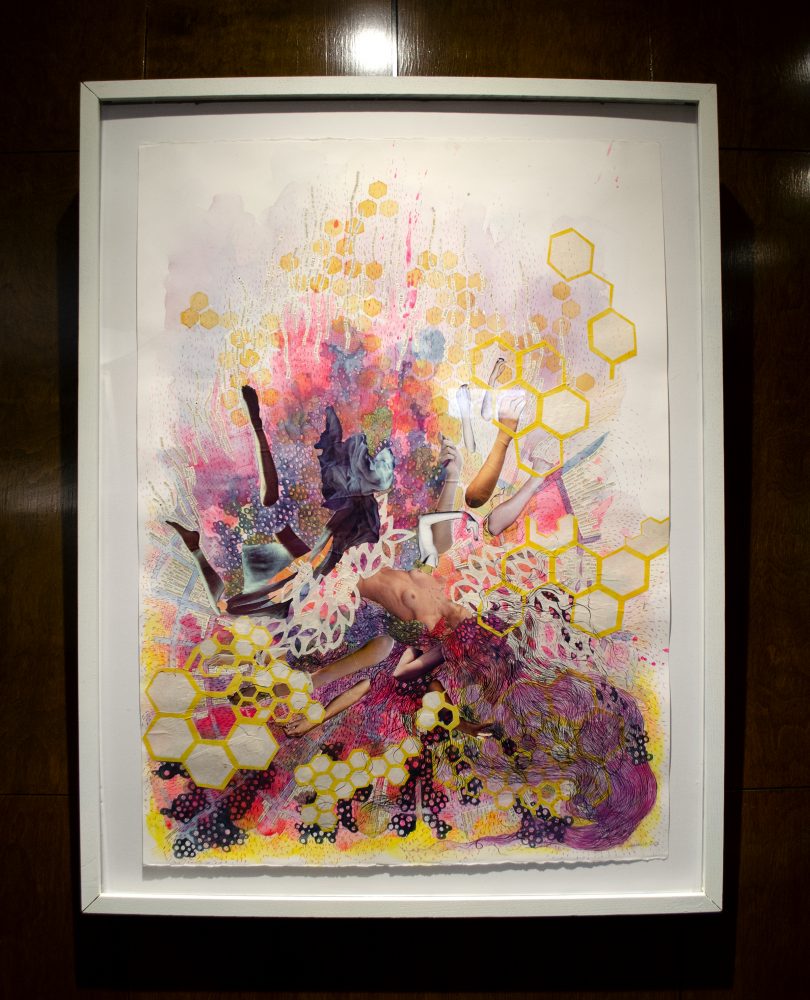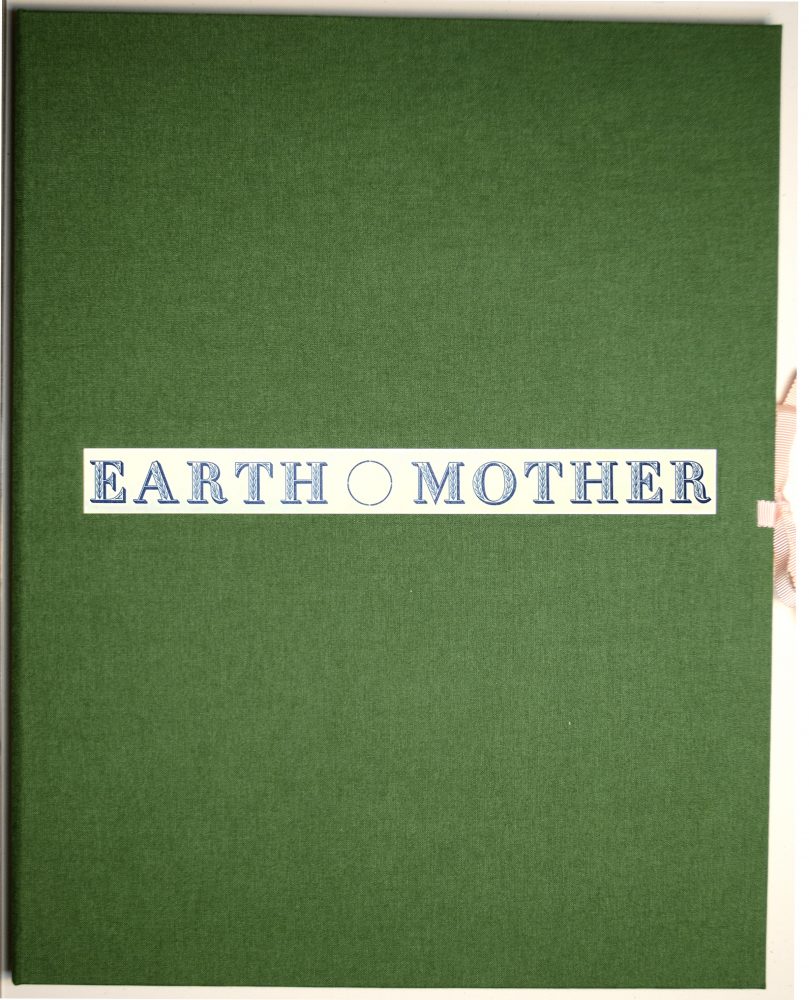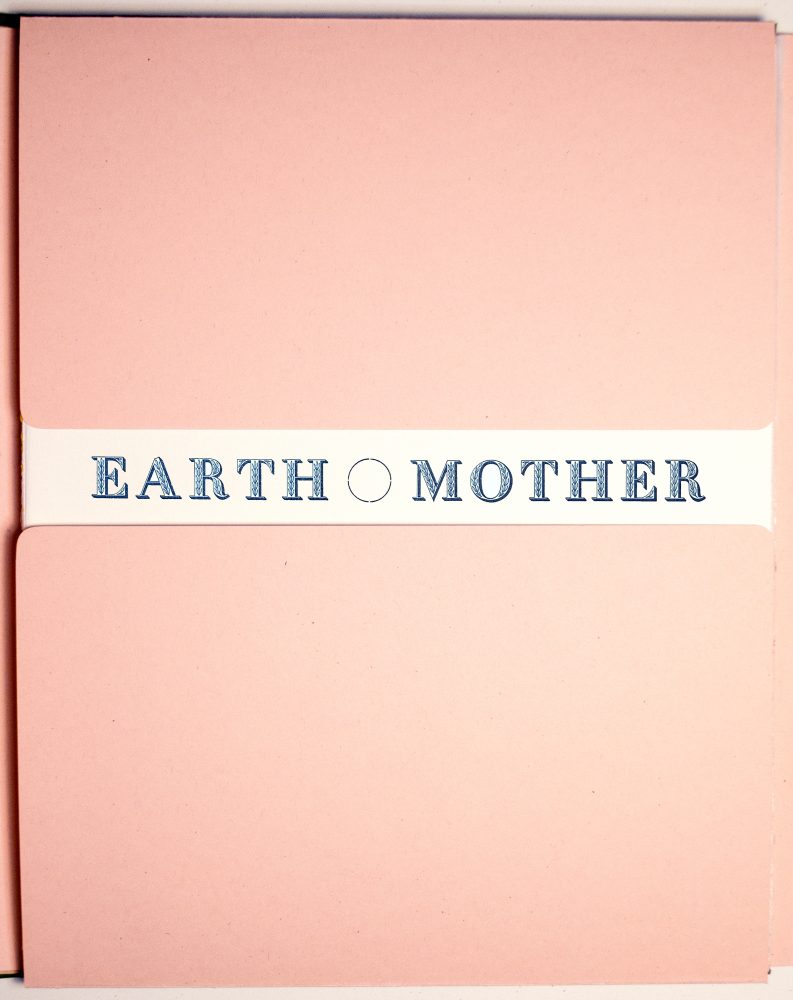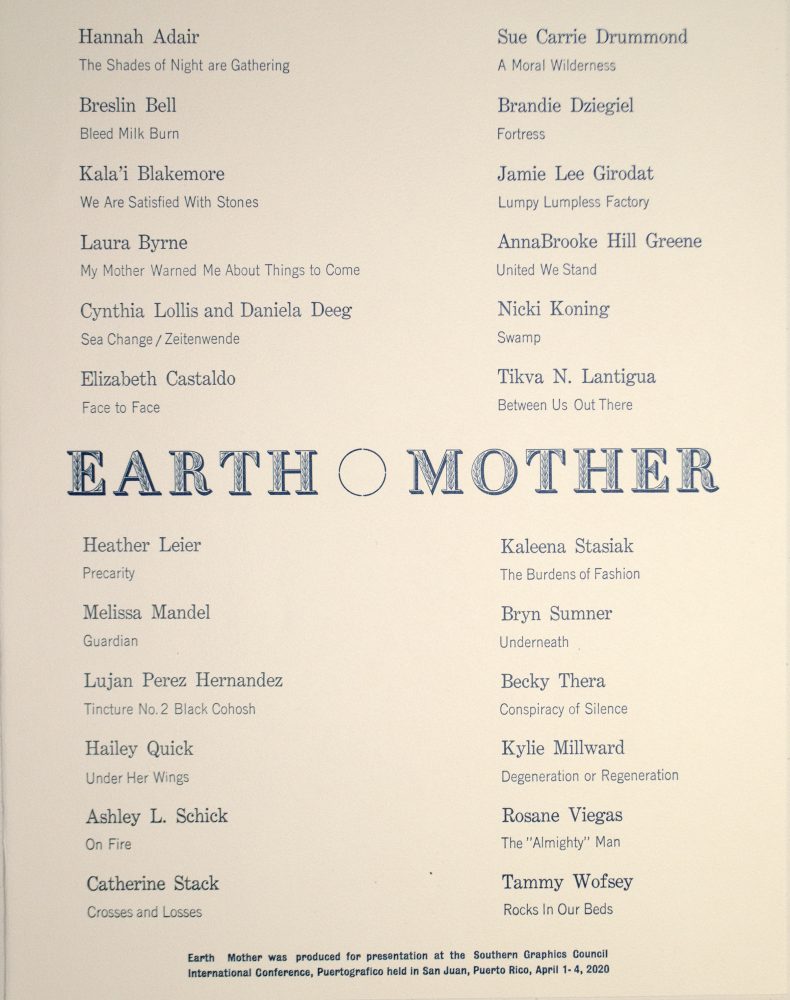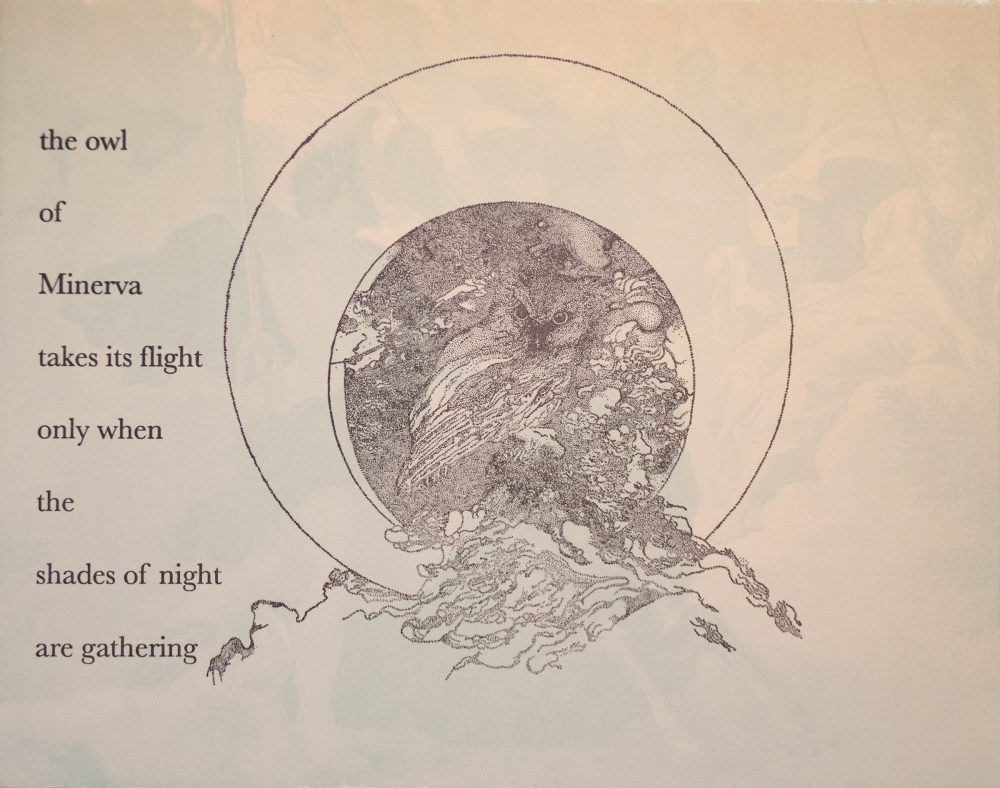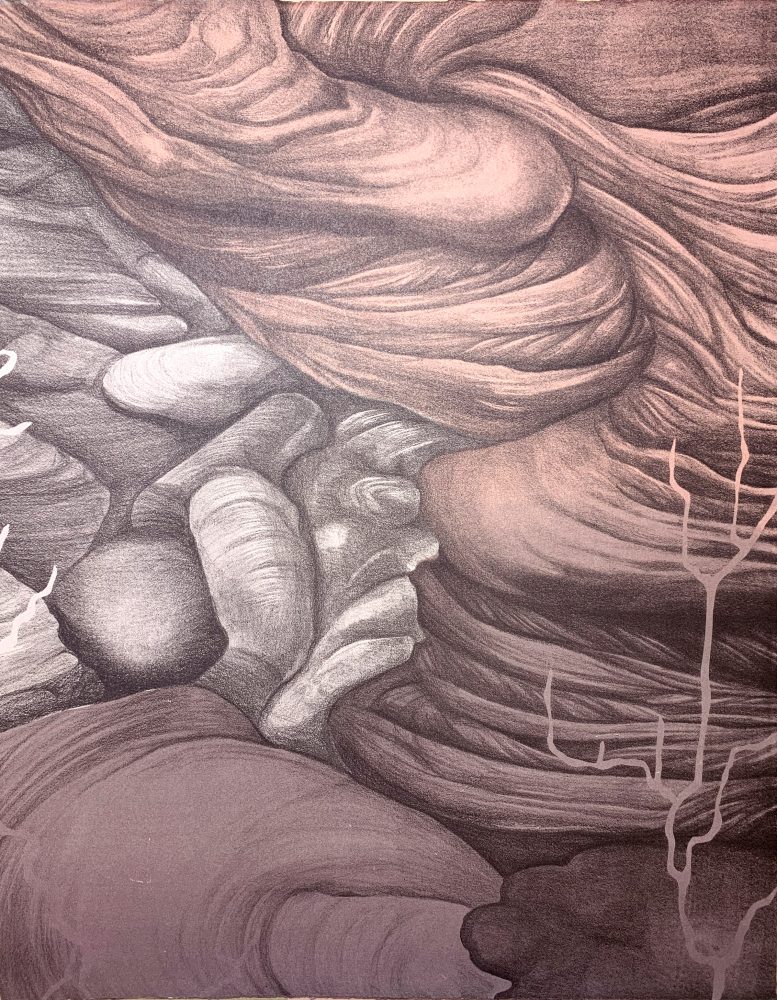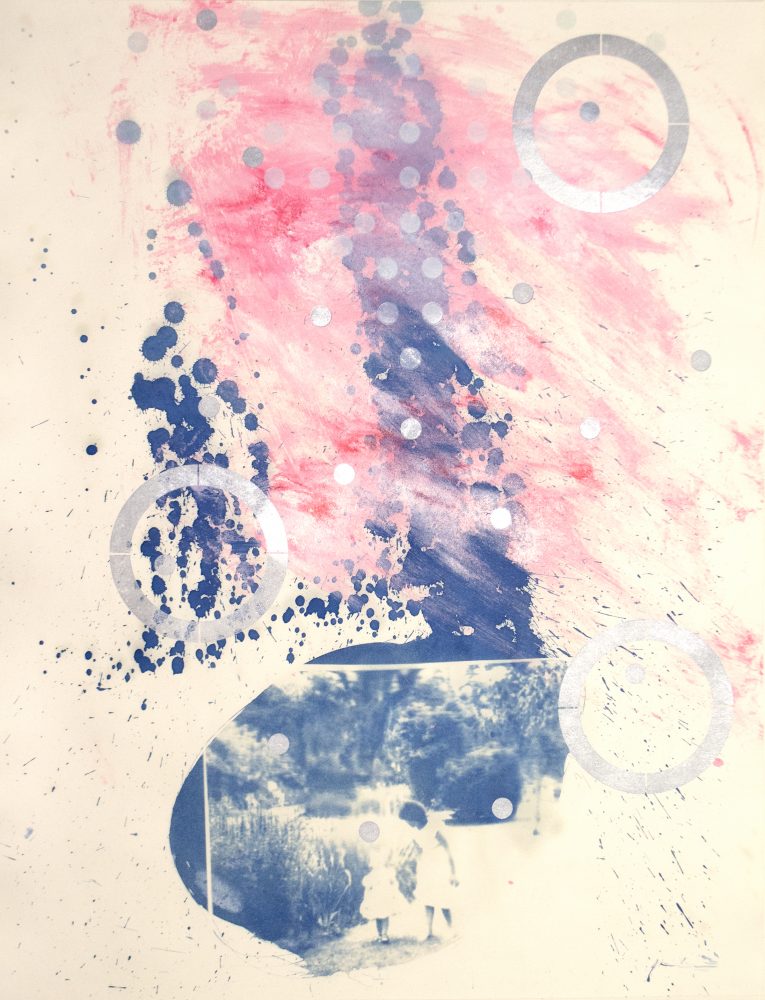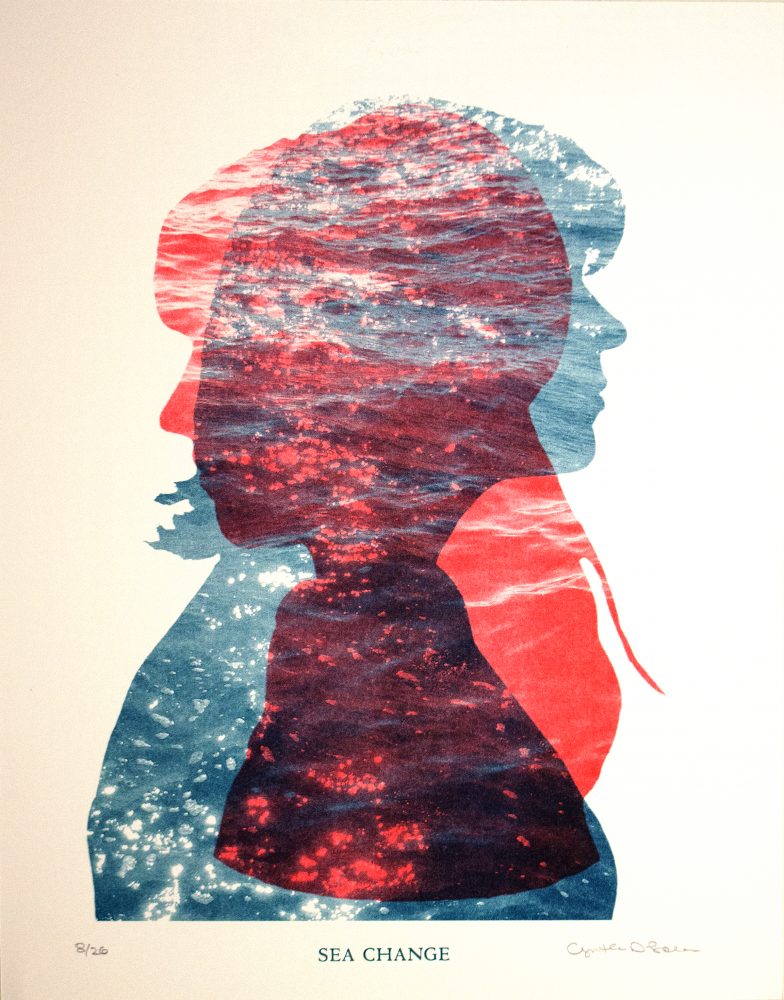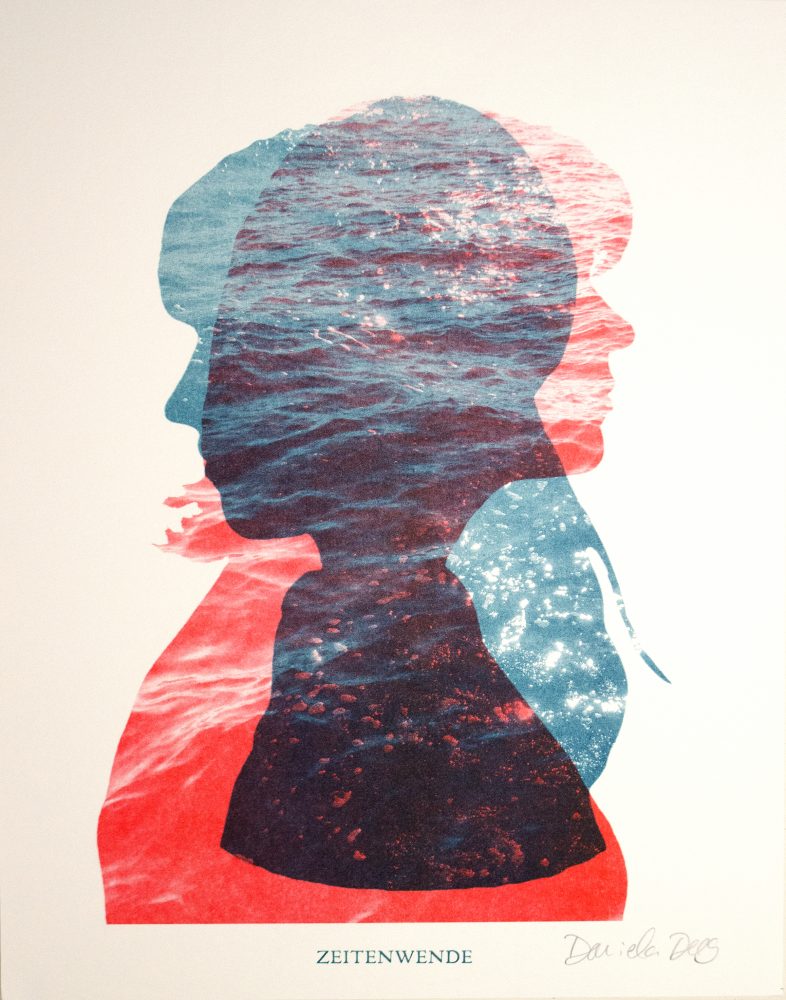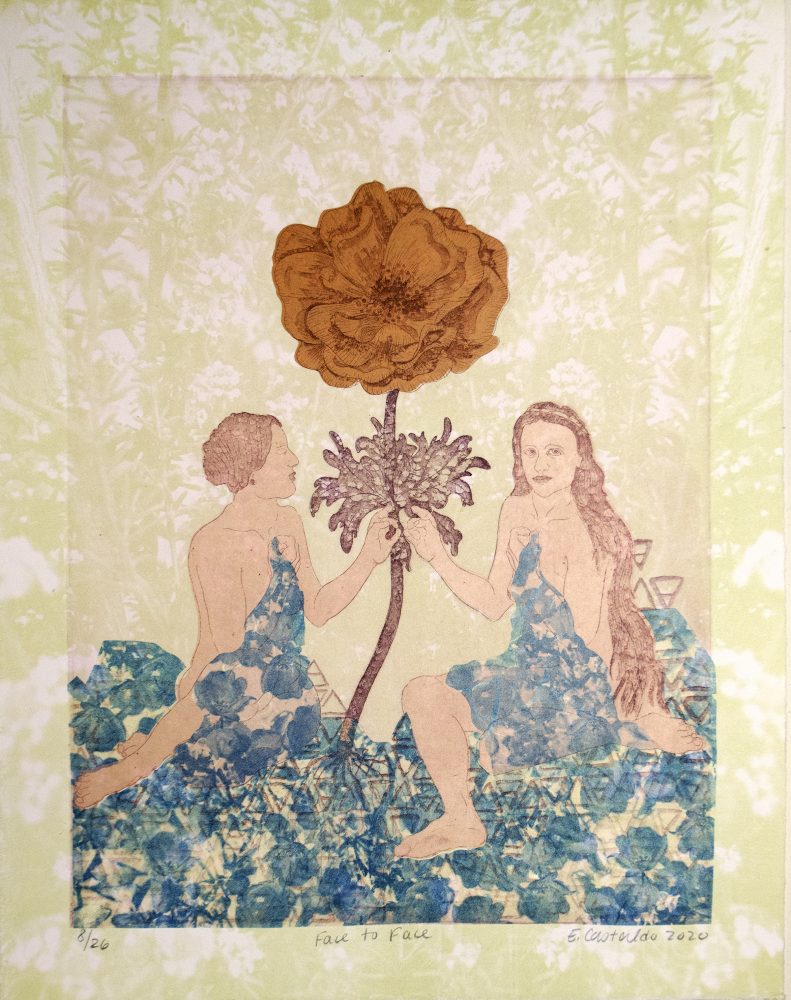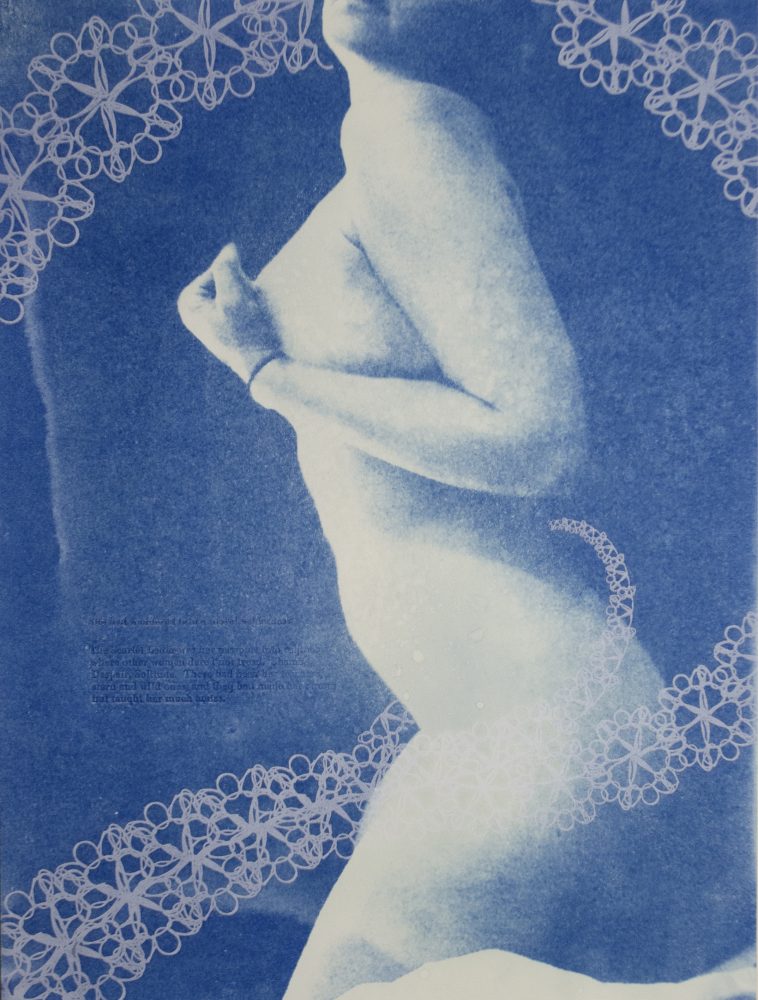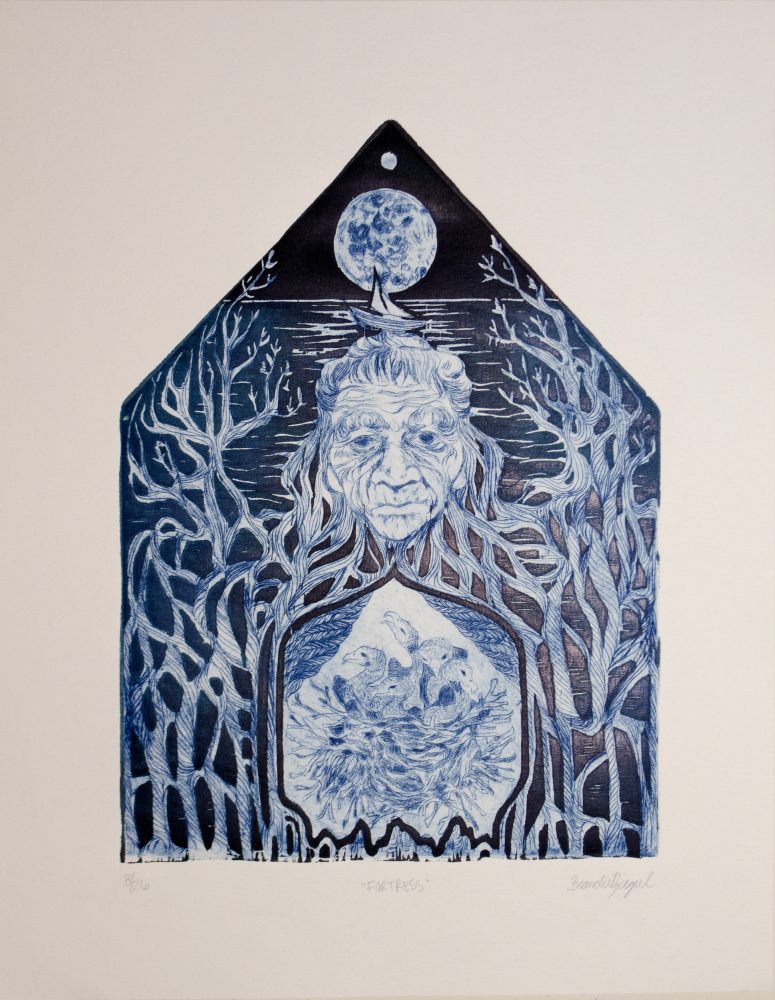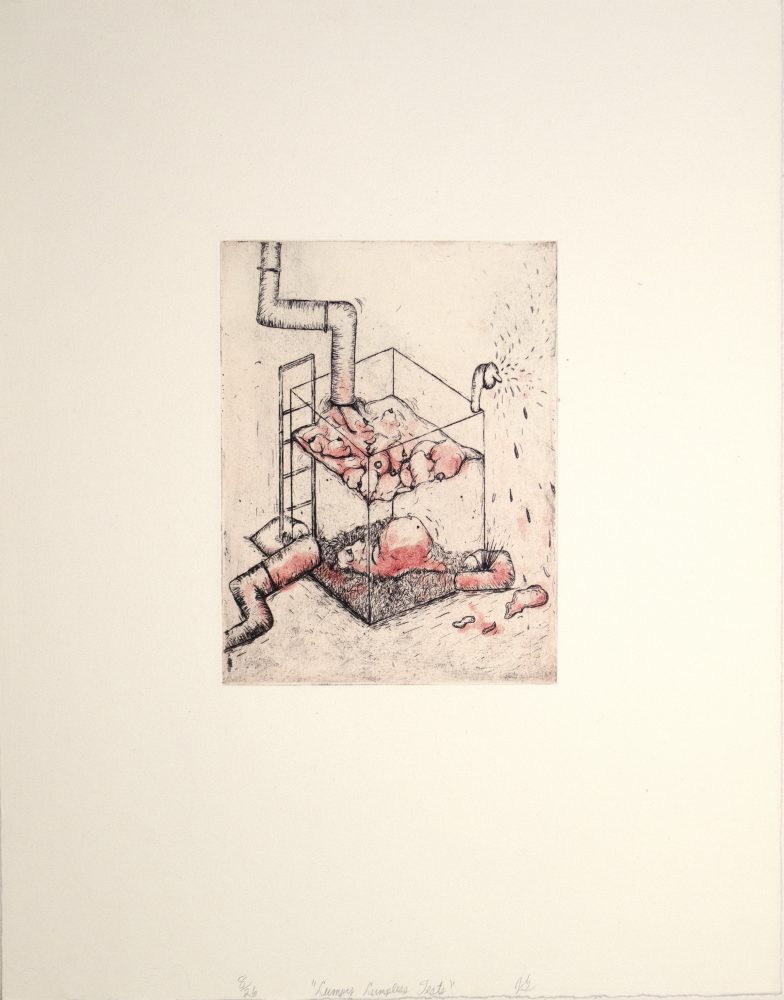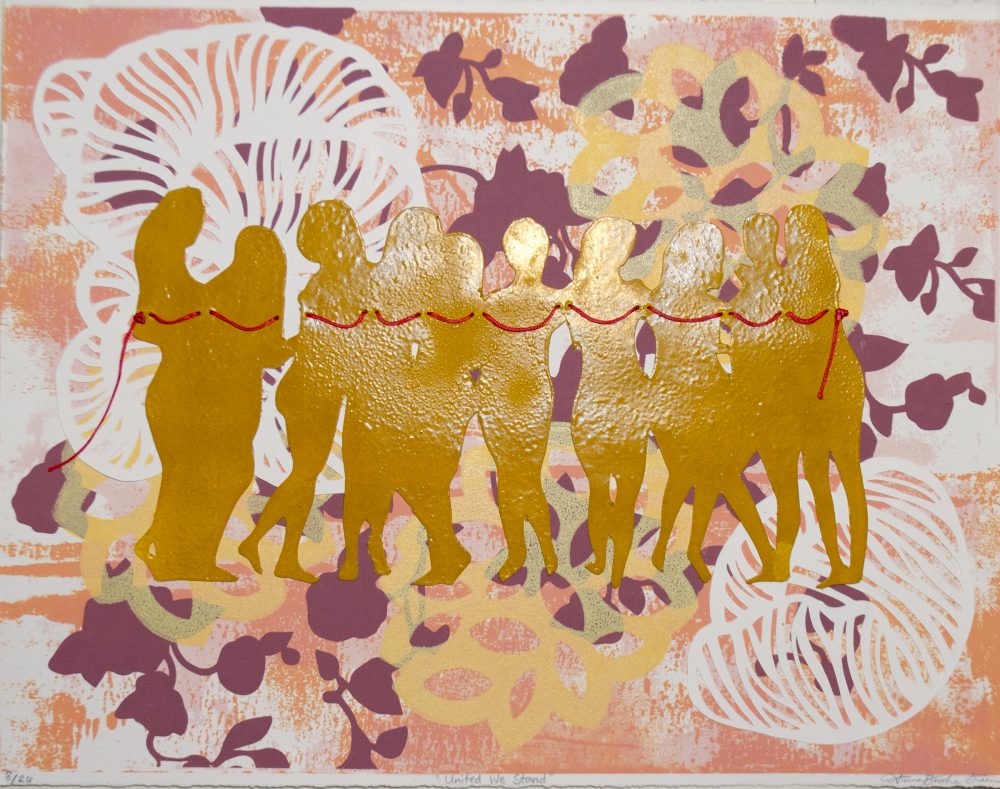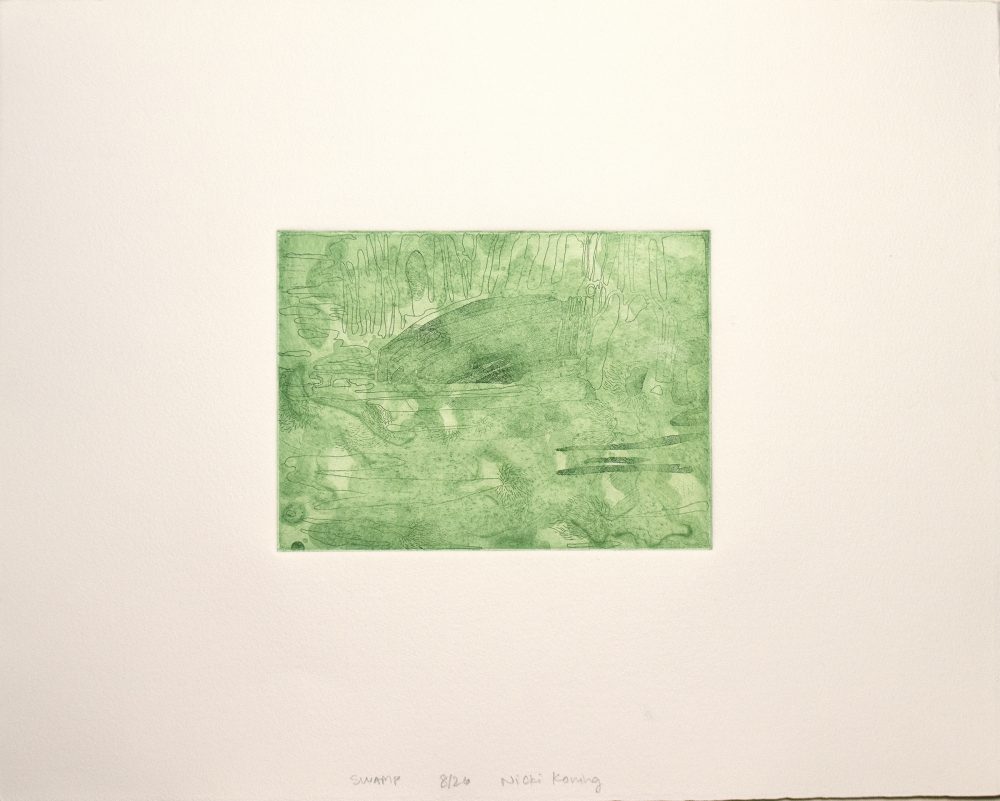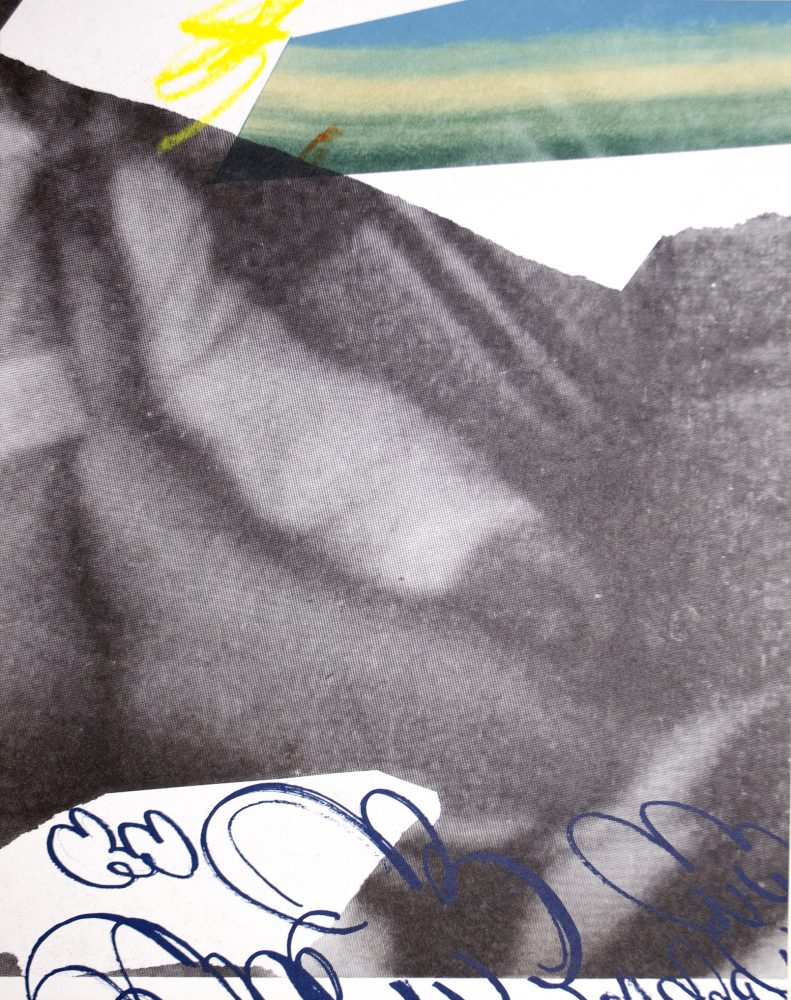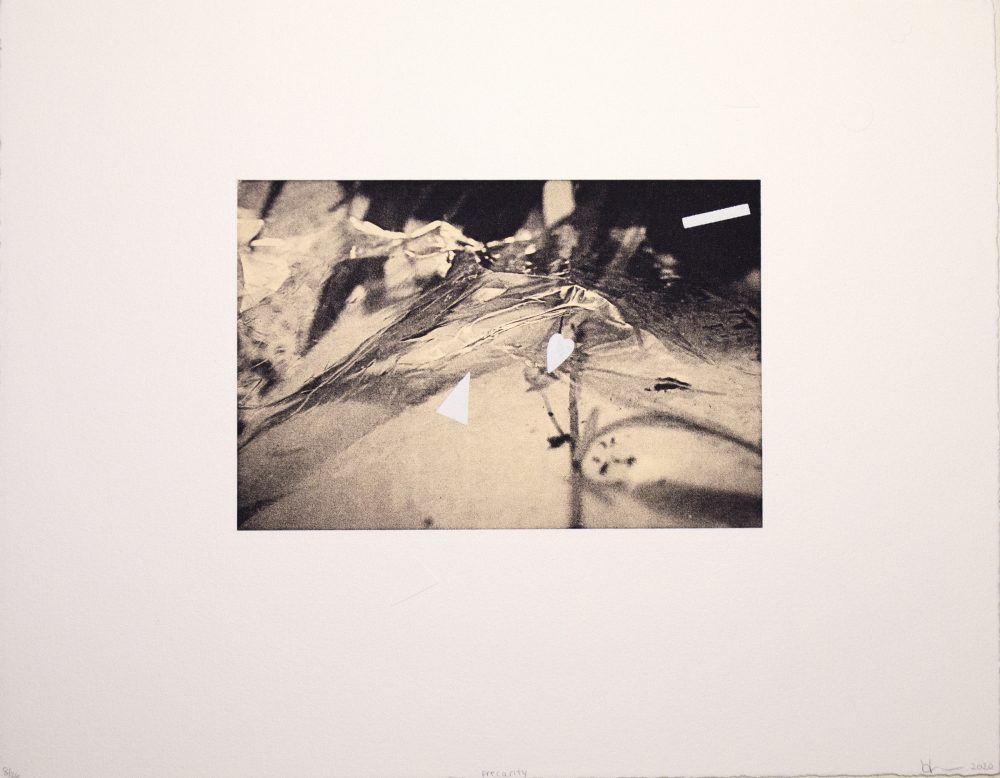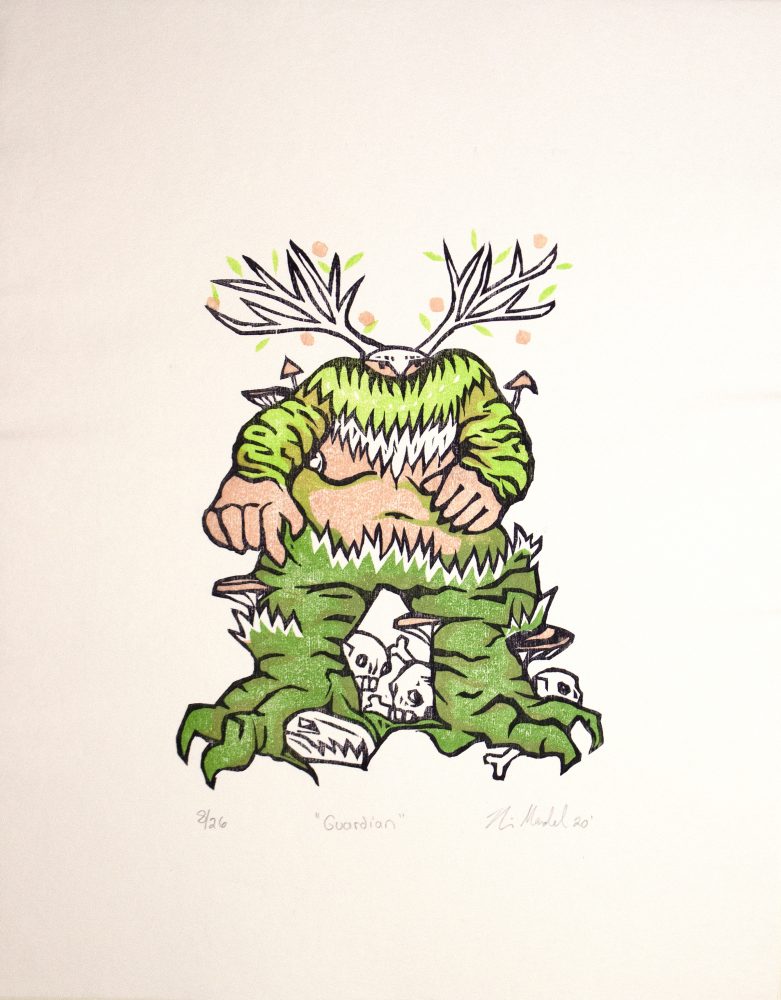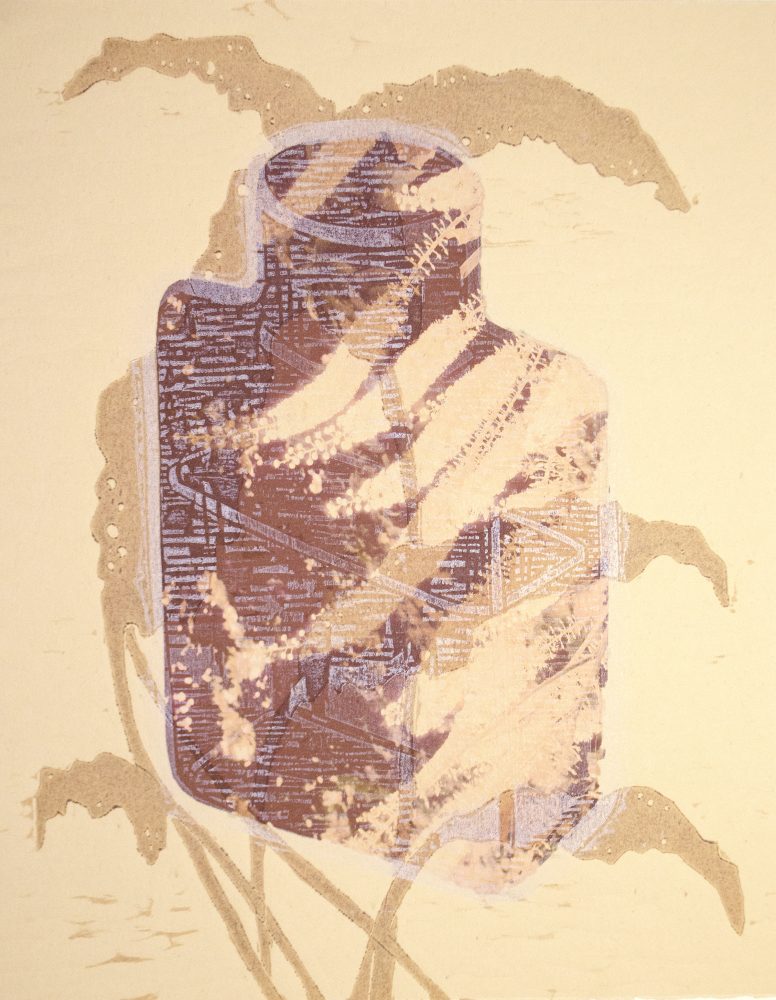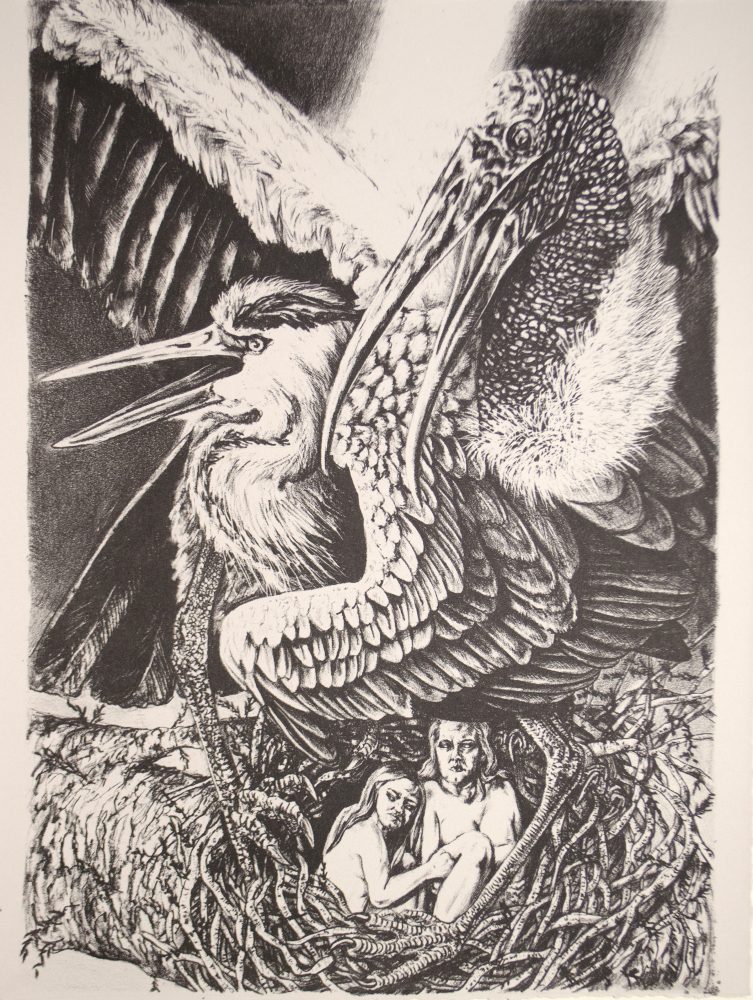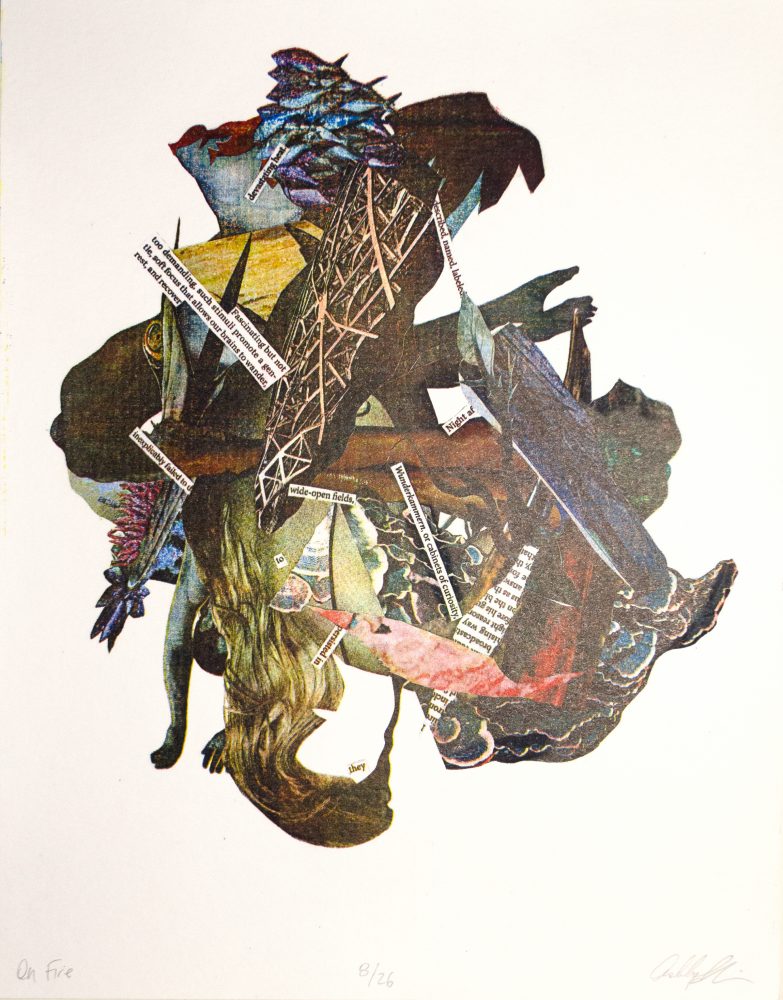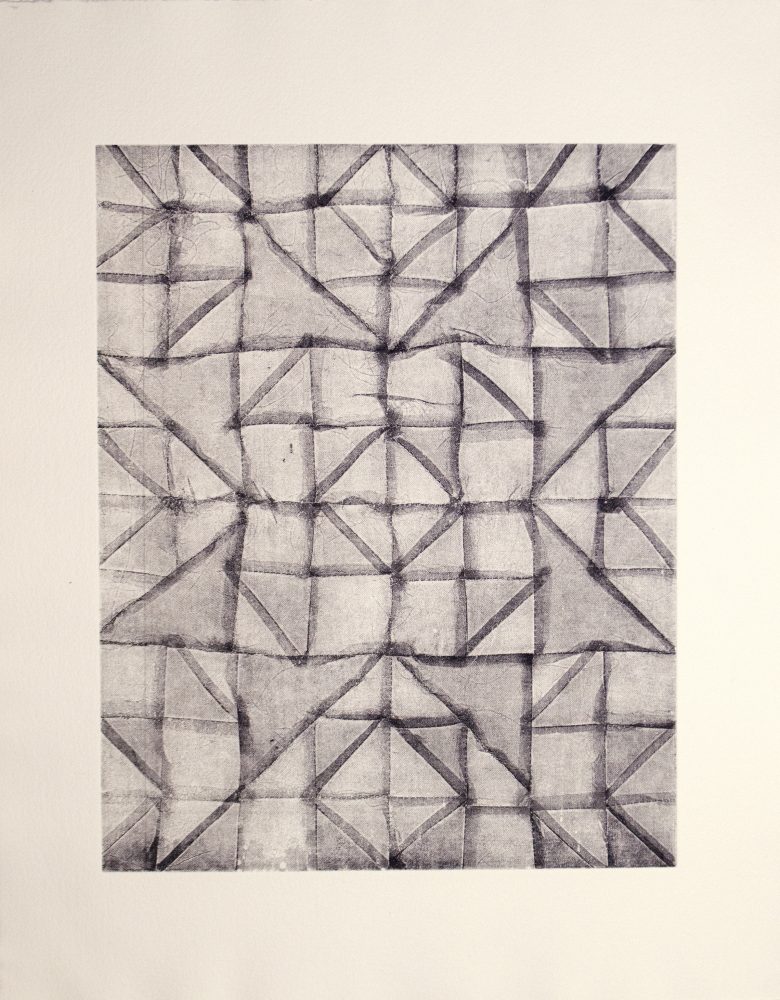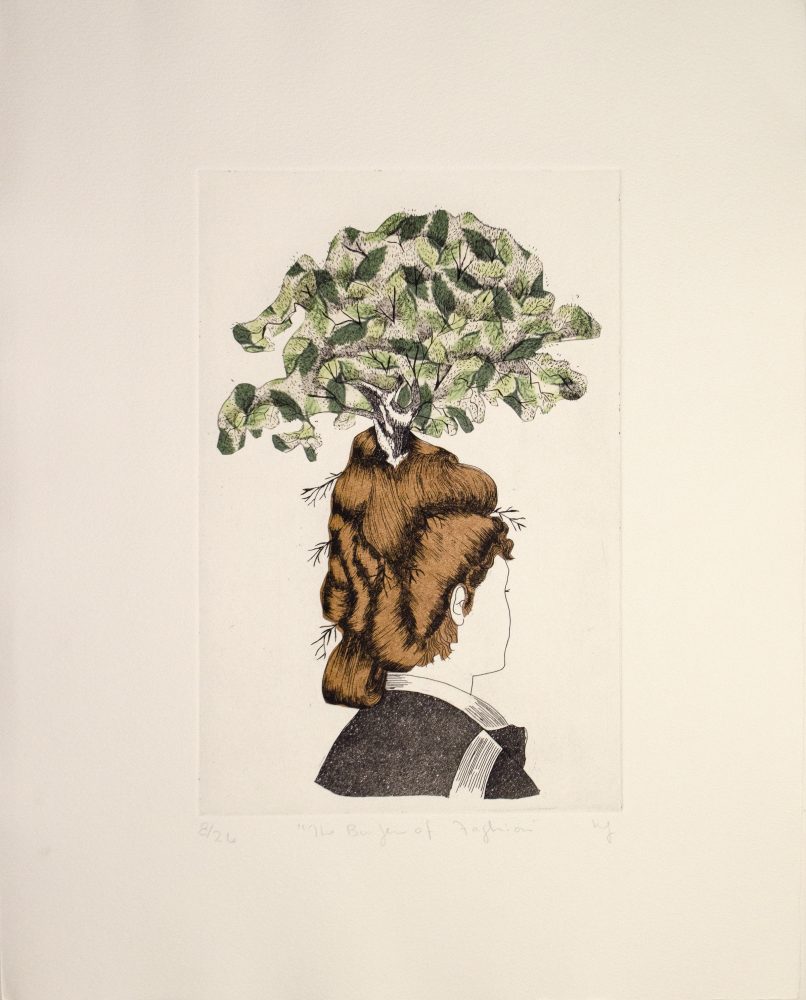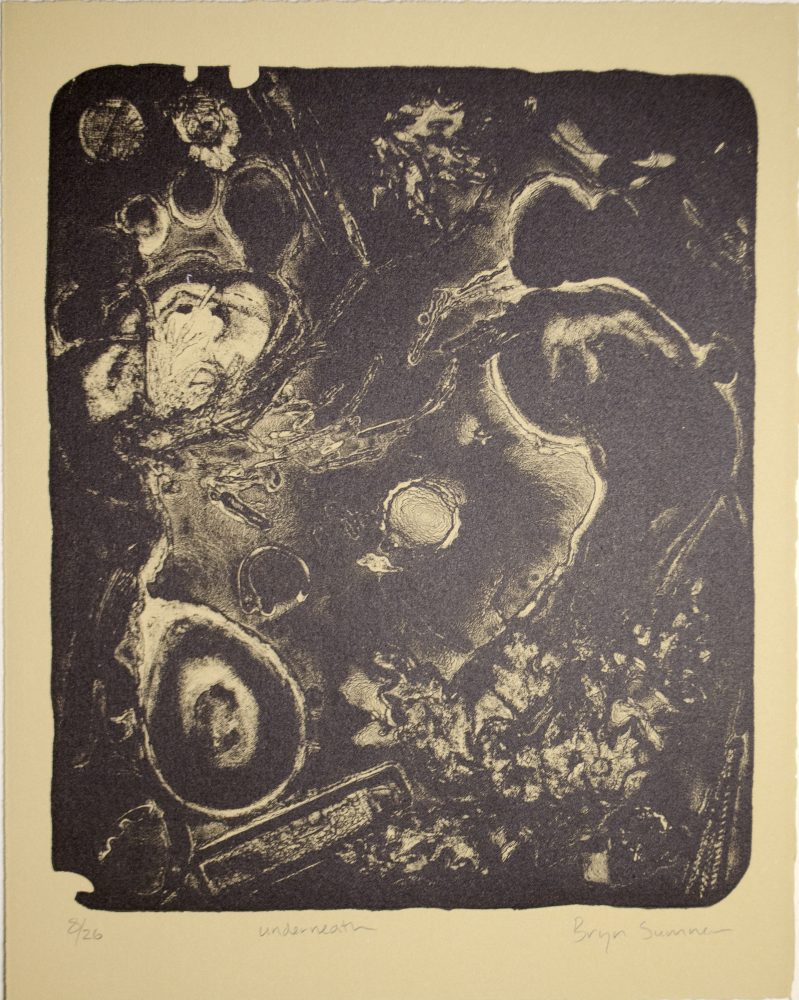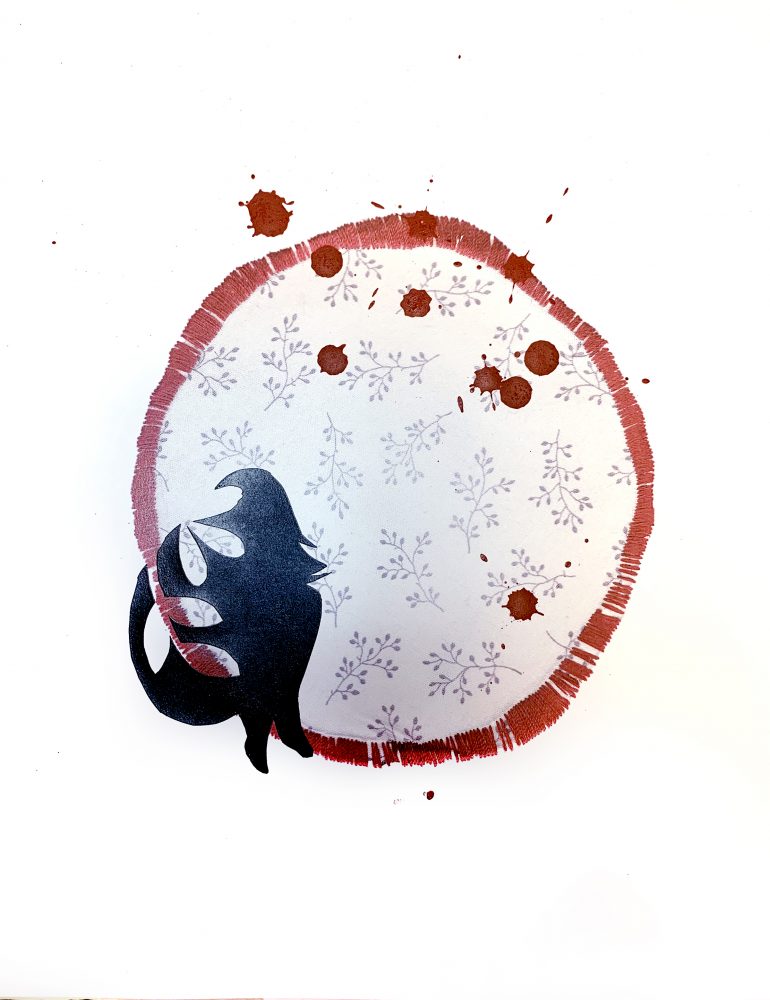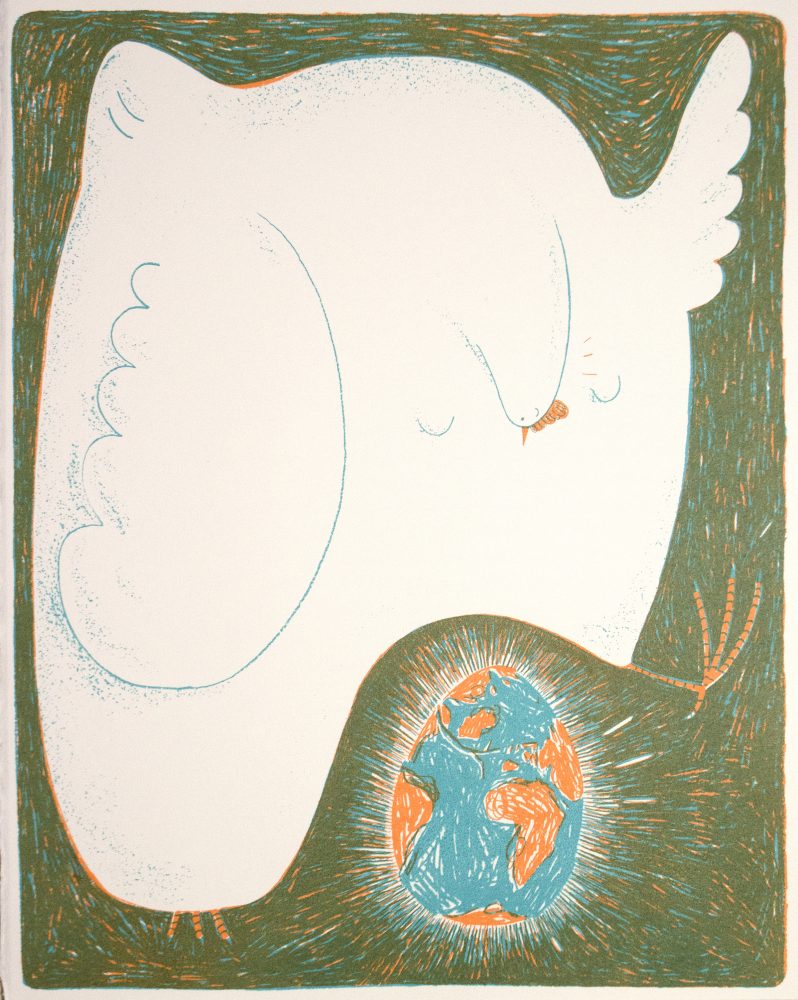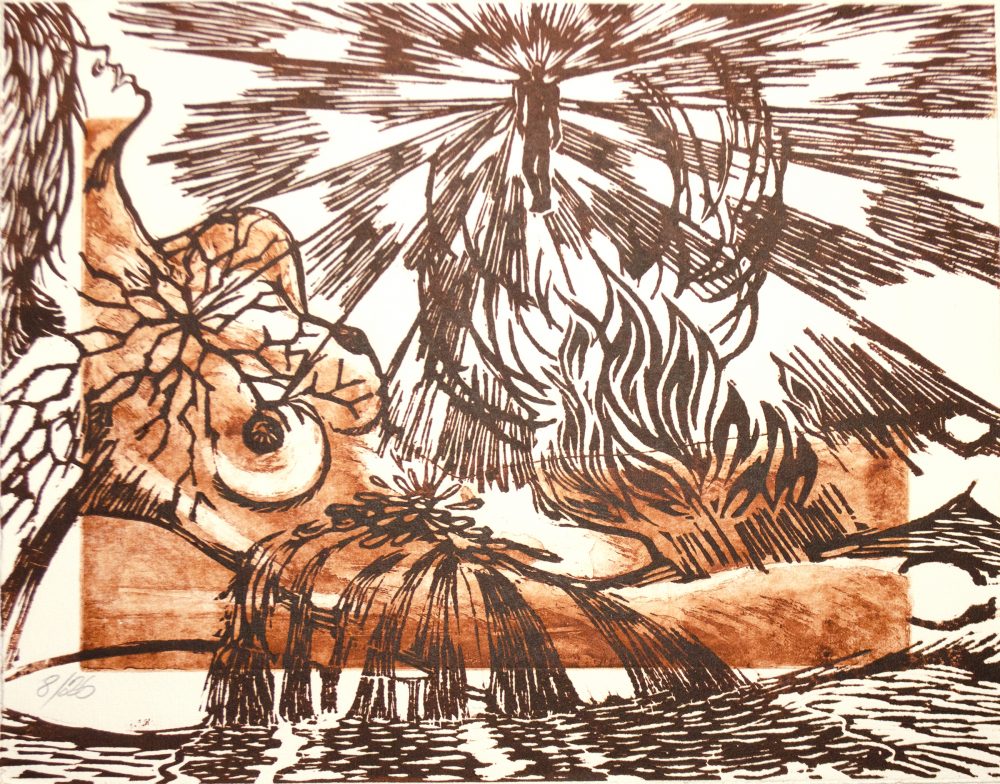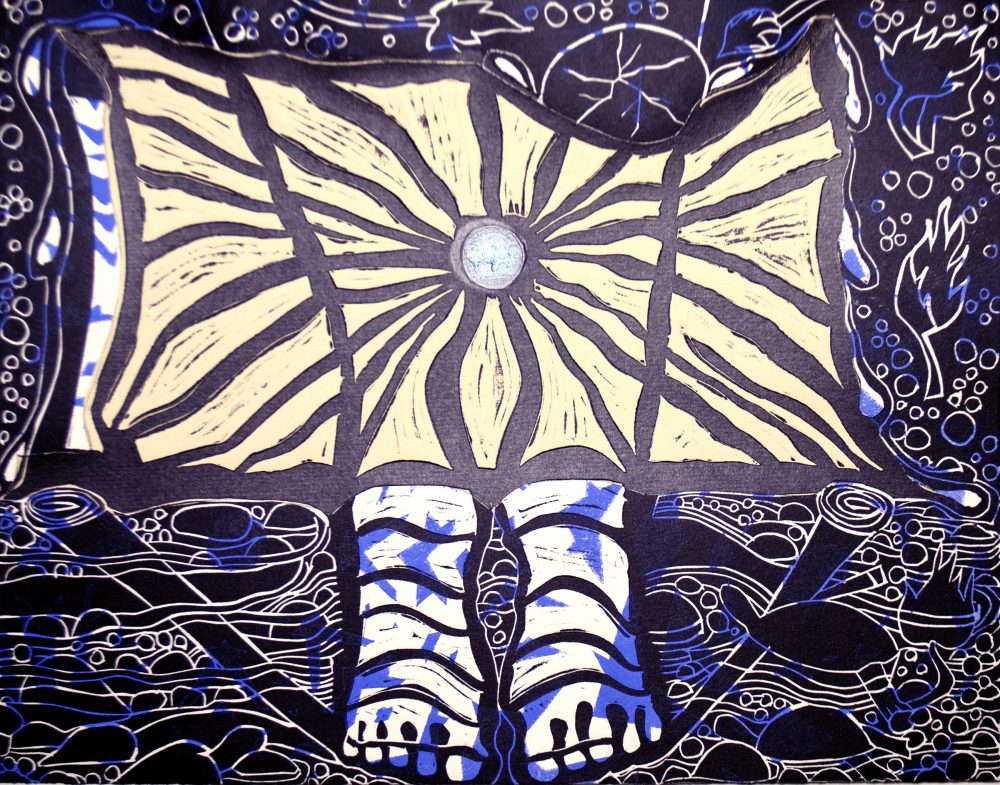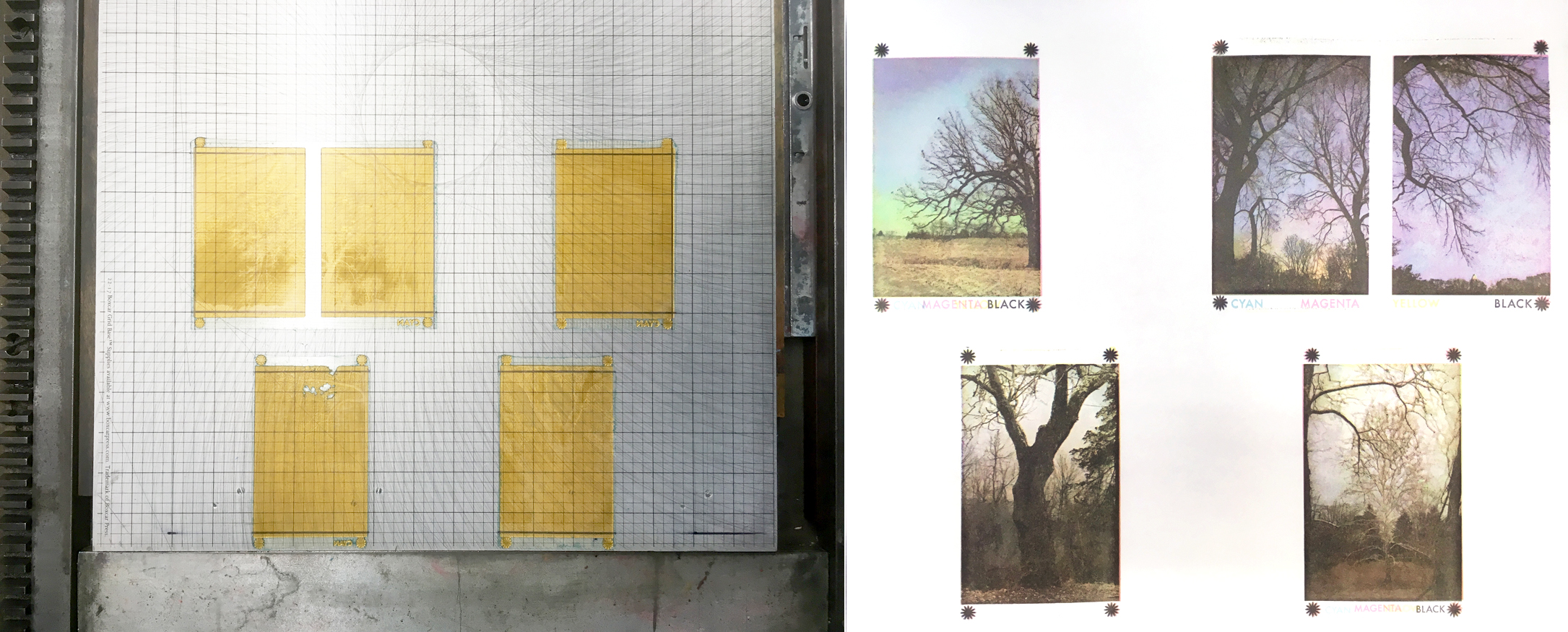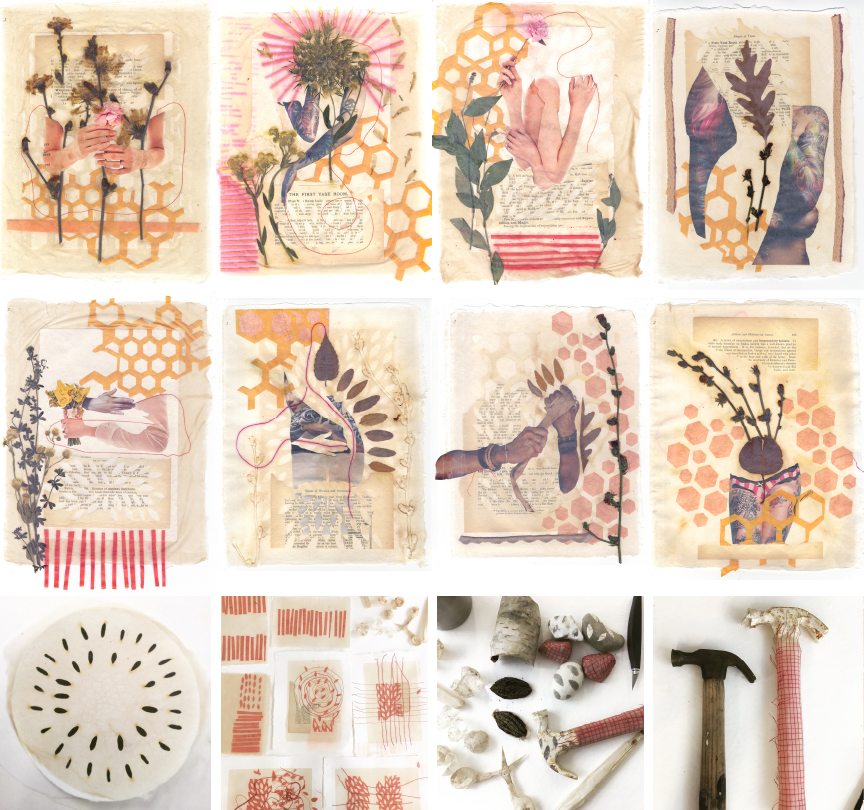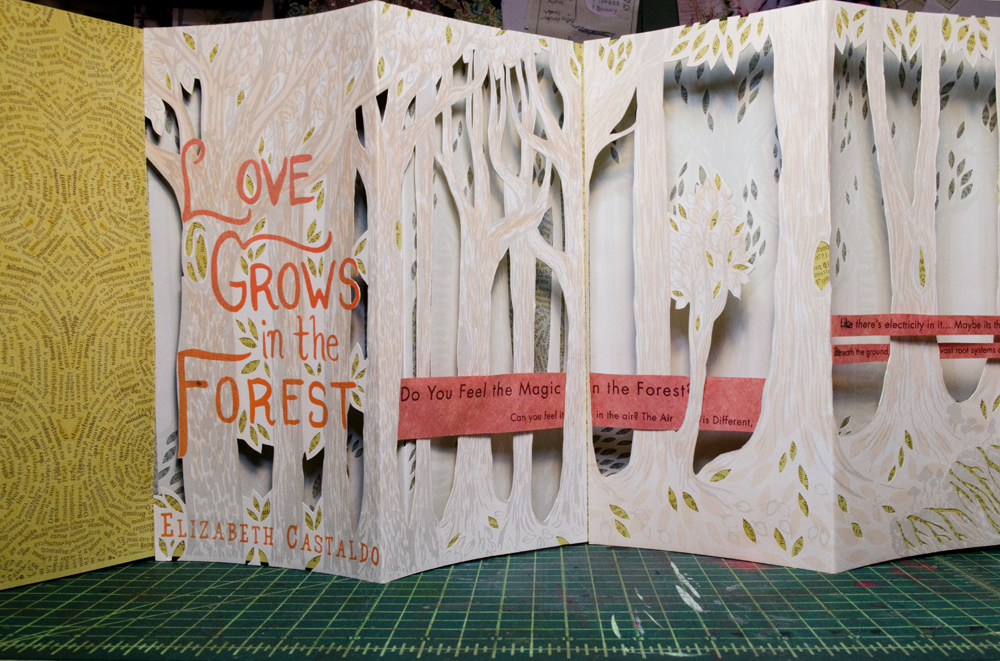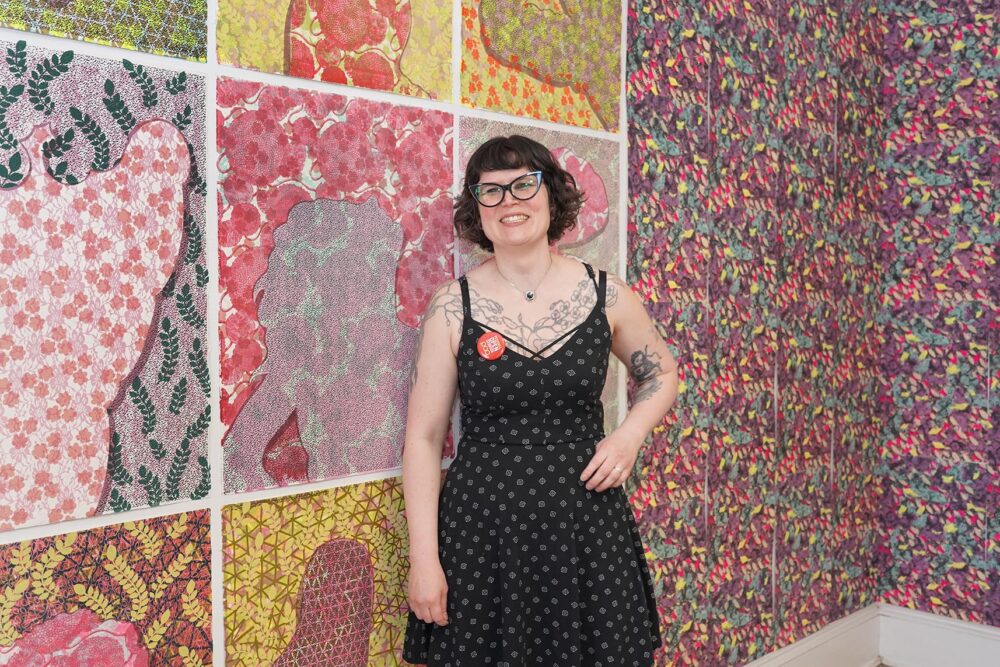
I was invited to be an Art-in Ed Artist in Residence at Women’s Studio Workshop. I was elated. I had been to WSW a few times for their summer intensive workshops and to use the studio as a renter a handful of times in the past. I loved being there, the studios, community and history of the organization were all so incredible and after years of applying to various opportunities, I was finally selected for a residency program. What a special thing to be given time, space and funding to focus only on making new work, and it would be especially special there.
That it was an Art-in Ed residency meant that I would be working with local students in addition to making my own work in the studios. The length of the residency was 8 weeks and I could live on site. This meant living apart from my family for longer than I had ever been away for an art residency, but it was only an hour away from home so that took some of that pressure off because they could visit.
Women’s Studio Workshop is located in Rosendale NY, which is just outside of Kingston and about 20 minutes north of New Paltz. It’s a cute little town nestled into the Hudson Valley near the Shawangunk mountains. Very much in the woods. There was no cell service.
I arrived on January 8th, one of the coldest days. The quiet studios buzzed with potential as Chris the Studio Manager and intern Thaïs showed me and Quinn Keck, the intaglio studio AIR around. I was focusing on silkscreen so the upstairs studio would be my home base. My living space was two houses down, where I would share a house with the four interns. My husband helped me move all my stuff in and then headed home to pick up our daughter from school. Without my own car, I was pretty much studio bound. This was going to be great.
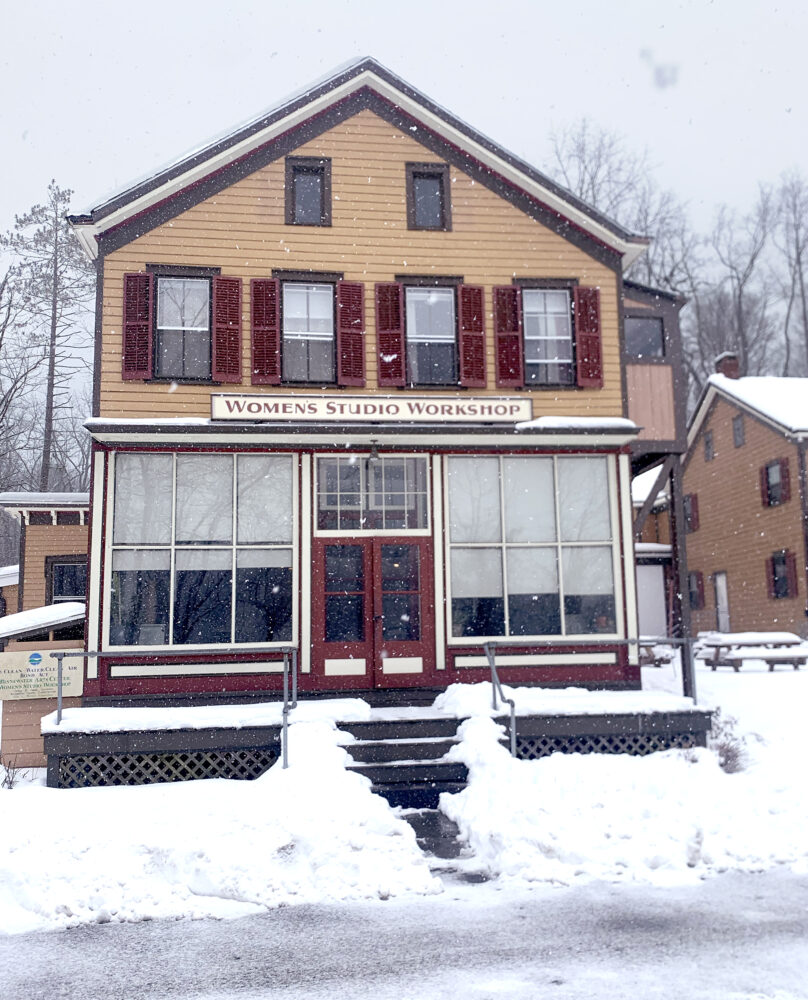
I was eager to get to work in the silkscreen studio. I was entering with a loose project idea for what I wanted to focus on during my time there, but I always have so much trouble starting. To get myself printing, I began a more composed print I had been wanting to make as a fundraising edition for aid to Palestine. For this print I researched some of the native plants of Palestine and decided to include Iris and Poppy flowers, Olives, Thyme and a pattern inspired by Jaffa oranges. I created text in big block letters that says “Palestine will be free and flourish”, expressing my hopes for the Palestinian people. The print is titled “Mantra for Palestine”. I was happy that this sentiment was shared by others in the studios and to see plenty of other pro-Palestine art being made and shared.
I made a really short video of this process you can see here.
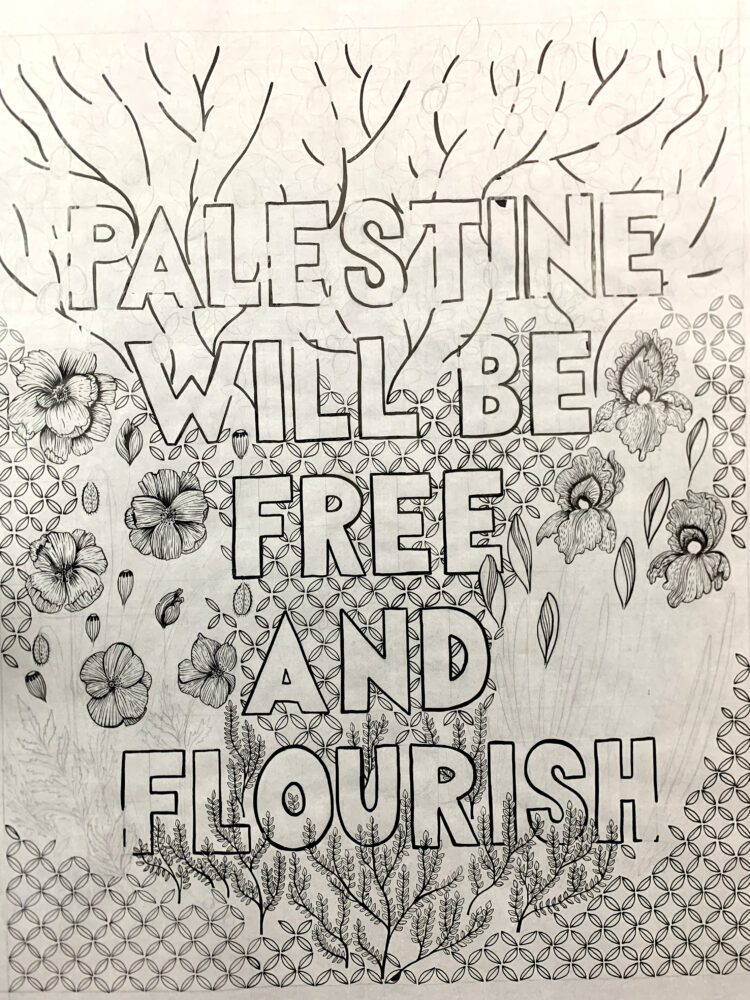
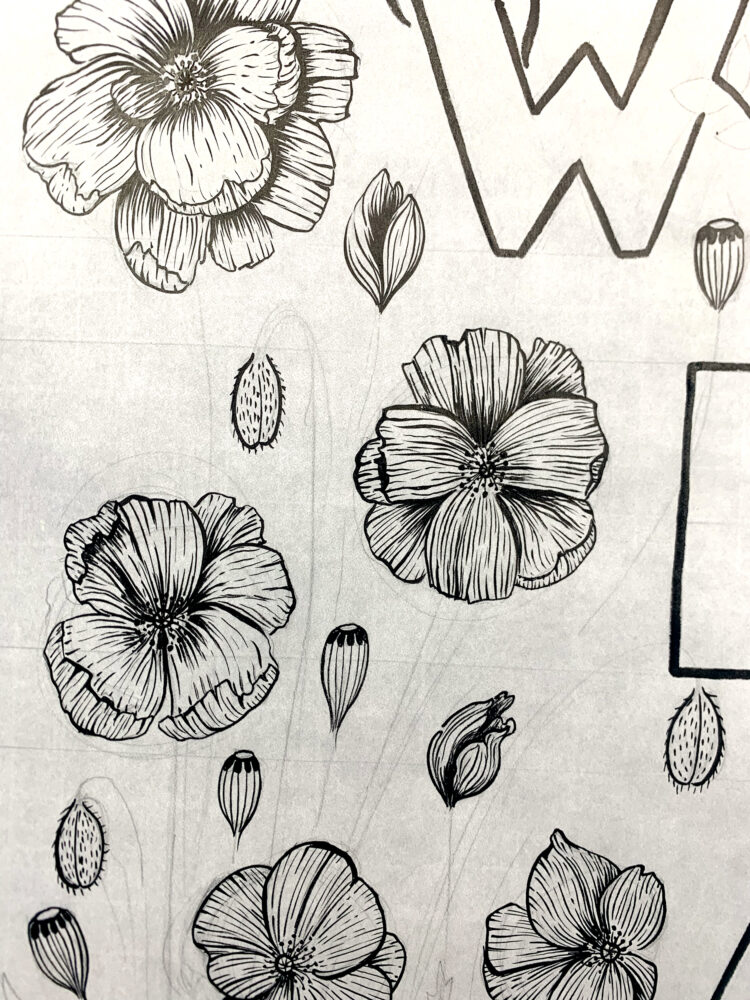
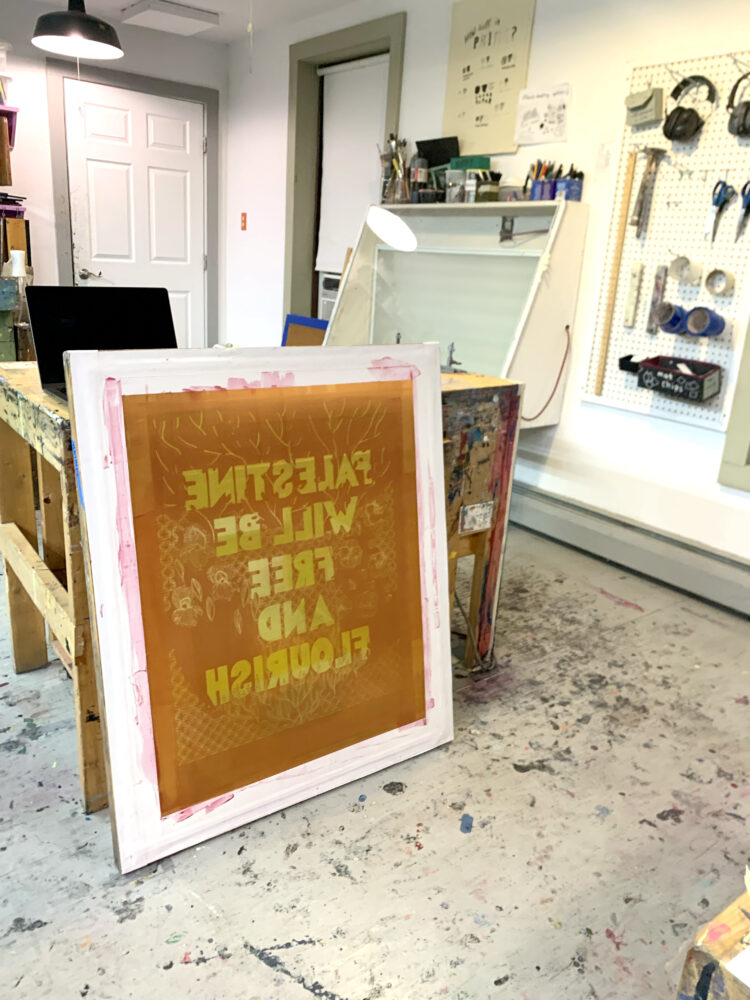
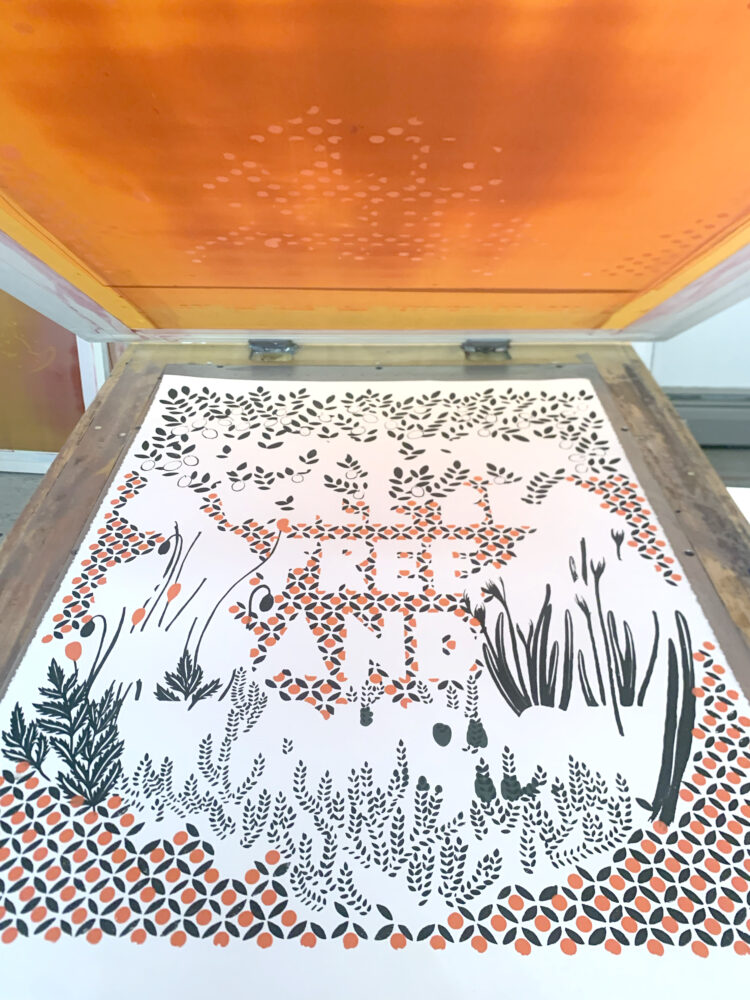
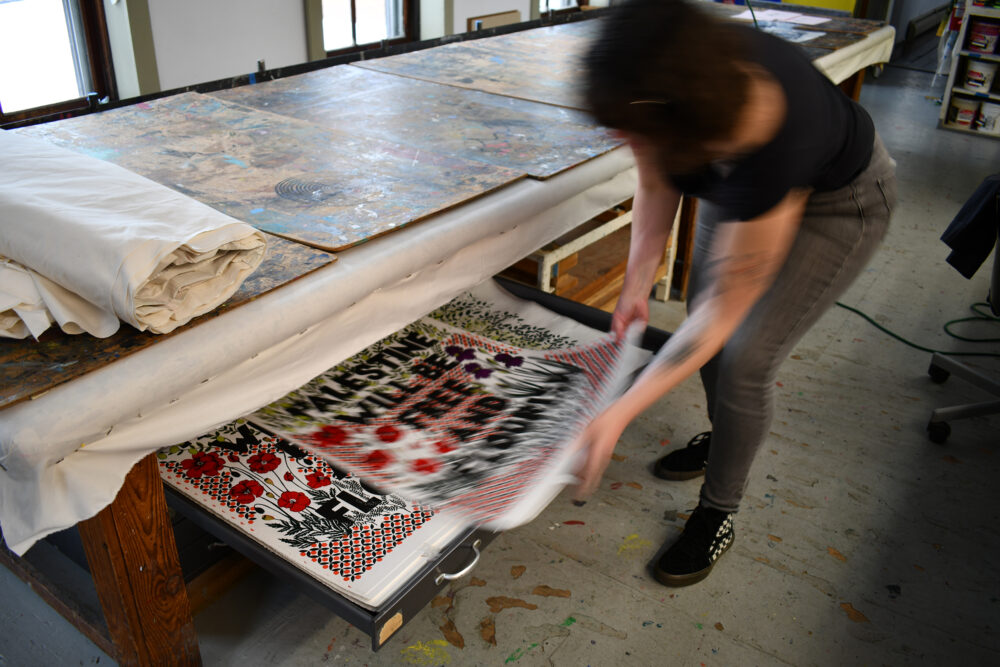
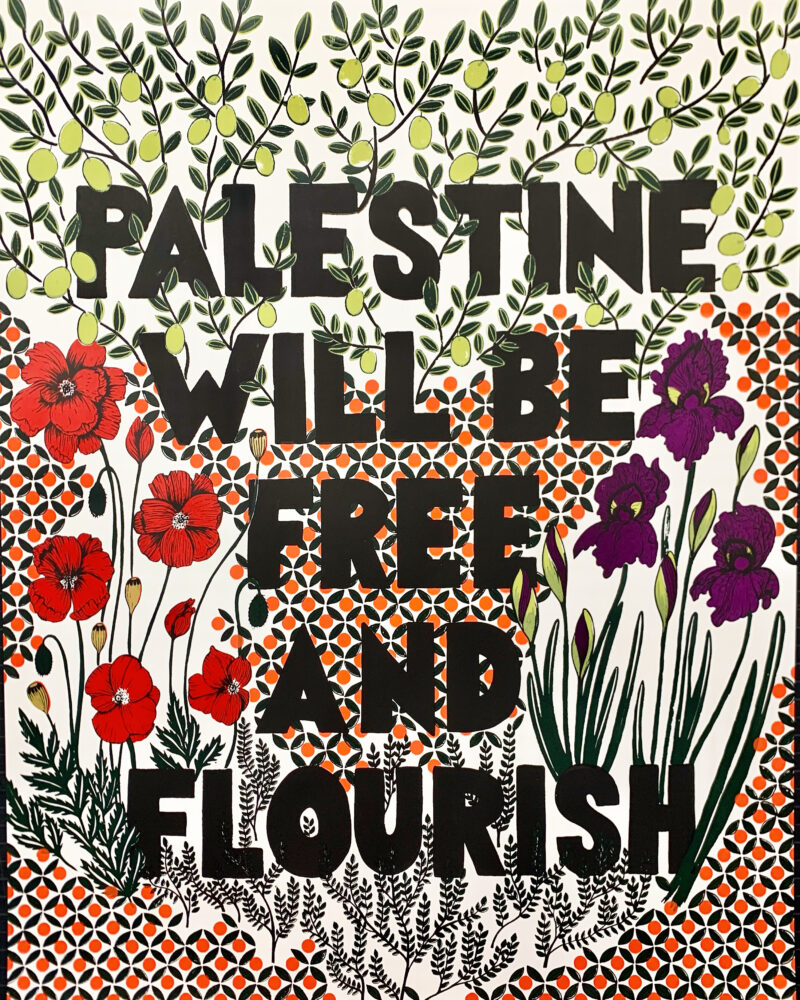
Next, being one to procrastinate on work by doing other work, I needed to make an edition for an exchange portfolio. I have a print in a really excellent portfolio called “By the Pricking of My Thumbs” that was organized by Kaleena Stasiak for the 2024 SGCI conference. To be fair, I did have a deadline and knew I would need to work on this print during my residency.
The design for this print features figures in silhouette relaxing. The figures are filled with a flower print, and surrounded by more patterns of leaves and flowers. As a fun touch, I designed the layout so that each individual print was one section of a repeat pattern, so if all the prints were tiled together they should make a seamless repeat of that image. This is sort of a secret aspect of the work, since each portfolio recipient will just have one print. But in theory if we all got together we could tile our prints to make a huge repeat print, covering the wall or ground or whatever. The title of the print is “Cultivating the Garden Together”. This idea of creating a modular repeat in this way was something I had tried out just for fun in the past and it was cool to apply that idea here. This project ended up helping me make some connections in my head about using pattern and repeats. This also became the inspiration for the projects I made with the 4th and 8th grade students I worked with, more about that in part 2! What I learned with these prints really drove the rest of the work I made at the residency.
I also made a really short video of this process you can see here.
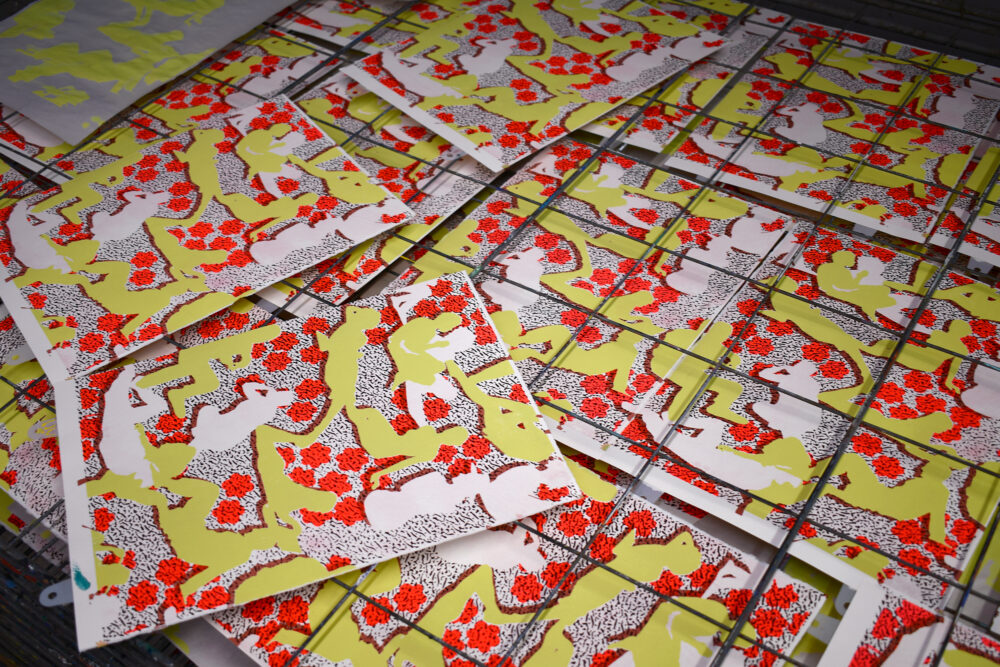
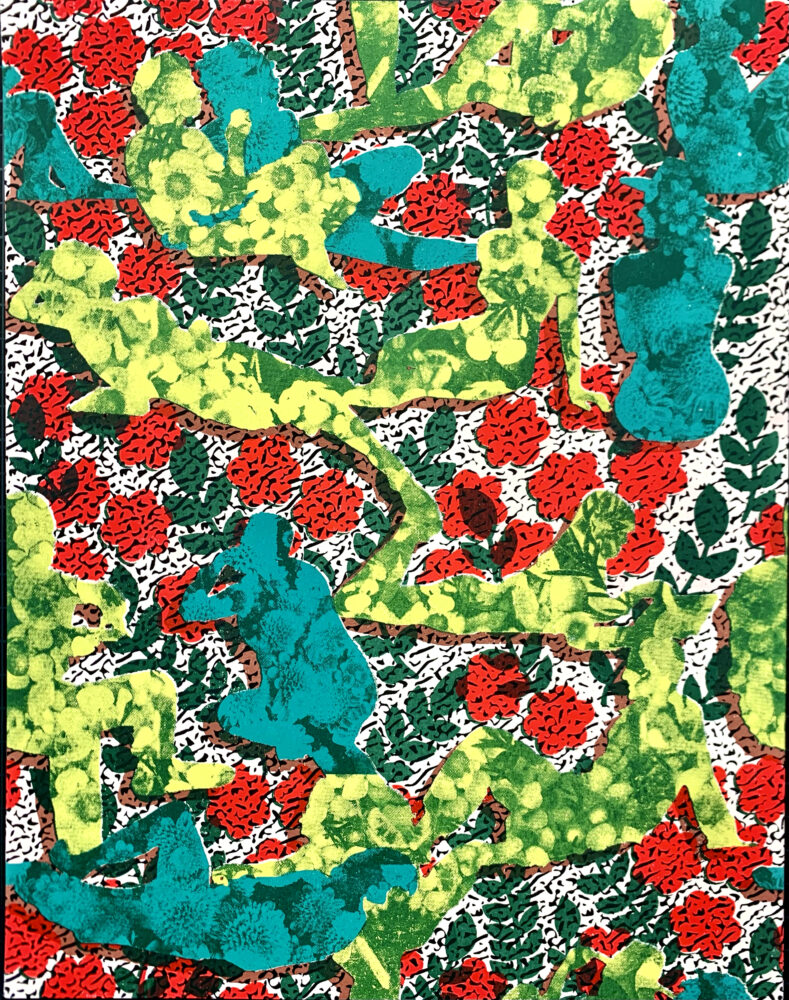
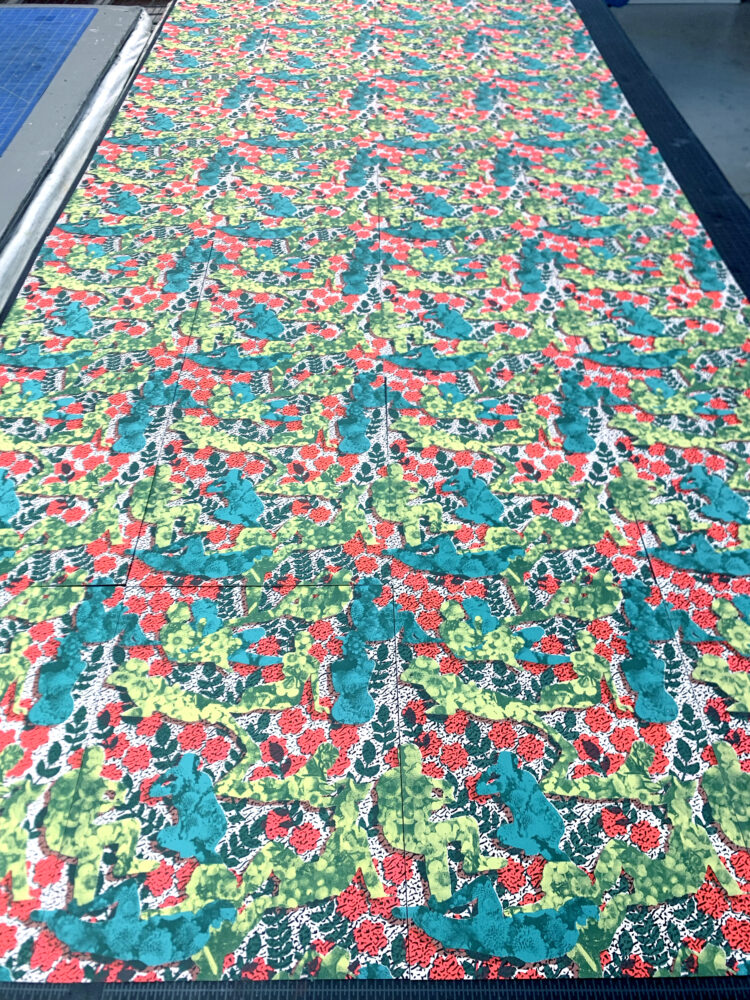
Now, I was sufficiently warmed up and it was really time to dig in and start on the project I had planned to make. I have a lot of experience working with silkscreen printing and have a pretty set workflow and process for printing. I wanted to shake this up a bit. When I make mixed media work, the process is really spontaneous, but when working with some printmaking processes like silkscreen I tend to follow planned and predetermined steps once getting into the printshop, which is fine if those are the type of prints I am making. I wanted to figure out how to apply a more generative and spontaneous approach to silkscreen, during the very act of printing, and see if I could approach the process in a somewhat similar way to when I’m working on my mixed media work.
I had seen a video a long time ago about a quick and dirty paper stencil method for silkscreen and used this as the basis for my idea. Basically, you cut your design out of a piece of lightweight paper, set up a blank clean screen, apply ink, and print through the paper stencil, which makes it stick to the face of the screen. This is now the stencil on your screen rather than emulsion or screen filler. I suppose you could also do the same thing with contact paper, but I really wanted to try to reuse the paper stencils if possible.
I knew I wanted to work with layered pattern, so I started there, by beginning to make several hand drawn and rubylith transparencies with different patterns, not really knowing how these would work together or what I was doing with them just yet. Just beginning to draw and cut some ideas I was having for imagery. I made some digitally as well using photos I had taken of flowers and textures. I used some of the patterns I had created for the previous prints and tiled them out in photoshop and printed them out on larger transparencies. I made some litho touche washes on mylar. I wanted to work with relatively large, full sheets of 22 x 30 printmaking paper that would have full bleed printing, so the transparencies were pretty big. In the end, I had created a library of patterns and dozens of transparencies.
I cut some stencils with large simple silhouettes of figures from kraft paper – 9 in all, and each with an interior shape and the negative space surrounding it, so each shape was really two stencils.
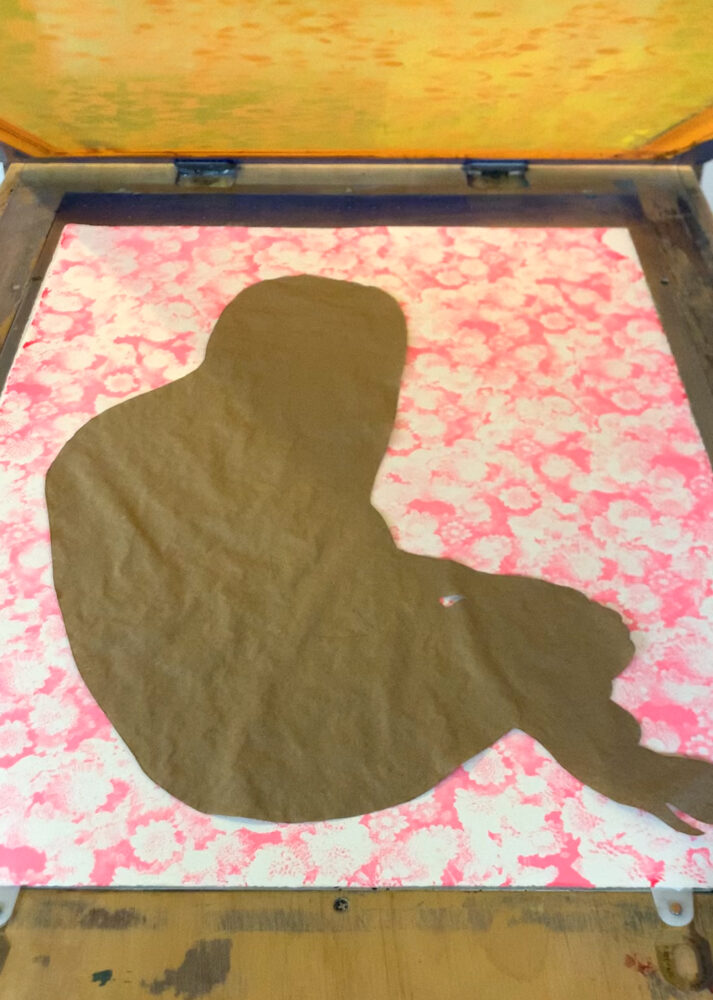
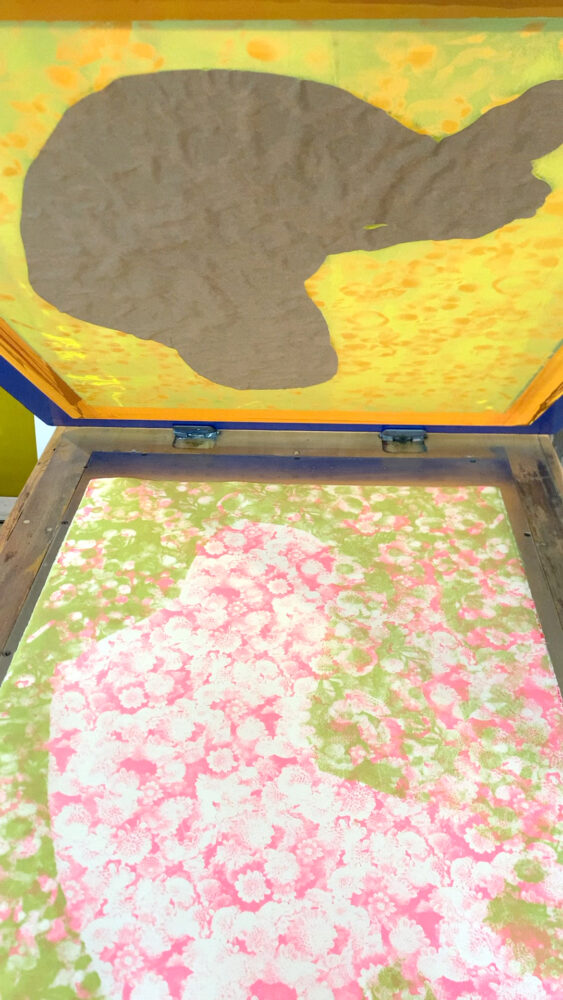

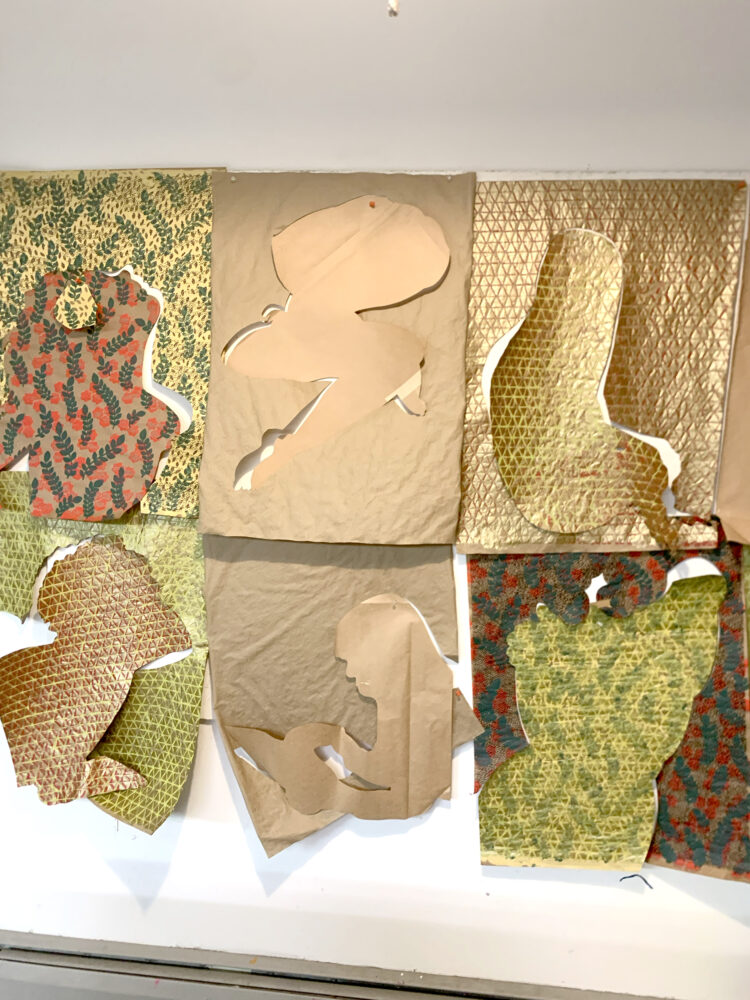
Now, time to print, this would be an experiment. I chose a few transparencies to start with – one of my touche washes, the bold floral pattern I had used in the smaller repeat print I had made, a scan of a security envelope pattern, and a pattern I made using photos of chrysanthemum flowers. I exposed screens with these patterns, just covering the entire printable area with the overall pattern. I mixed some colors that would work well together and just started by printing a handful of sheets of paper with each pattern. Next, I took one of my kraft paper stencils and chose one of the patterned screens to work with and some of the prints I had just made that the new pattern would be printed on top of. I laid the paper stencil onto one of the prints, underneath the screen, and squeegeed the ink through. The result was that the image exposed onto the screen was now printed onto the first print in the shape of the paper stencil. Since silkscreen is already a type of stencil, adding the paper stencil layer gave me the ability to stencil the stencil. Since the paper could be carefully removed, allowed to dry and re-used, I could use the same stencil shapes with different patterns and colors, overlaying them onto a multitude of different prints in progress. At first it felt a little overwhelming and chaotic, but I slowly got into a work flow of choosing a screen, choosing a stencil, choosing one or two colors, and gathering paper and prints in progress to apply the new pattern to. I figured out a very loose registration method so I could print in the positive and negative spaces of each stencil shape.

I approached it as a collage process, responding to what I had printed on the paper previously, slowly refining shapes and figures as I layered up, working on several prints at once, all of them unique.
This was a fun way to experiment with layering pattern and color, playing with negative and positive space, and foreground and background.
Figuring out the process was challenging and definitely imperfect, but I had a great time and loved the results. Working this way allowed me to generate many different variations relatively quickly, about 60 unique prints in all.
Once I had a lot of prints ready, I began laying them out on the large tables and hanging them on the wall outside of the studio to see what I had. I hadn’t originally intended for these to be tiled together to cover the walls, but they looked incredible displayed in this way. A completely covered wall of pattern on pattern on pattern, defiantly colorful, exuding joy and excitement, enveloping the viewer.
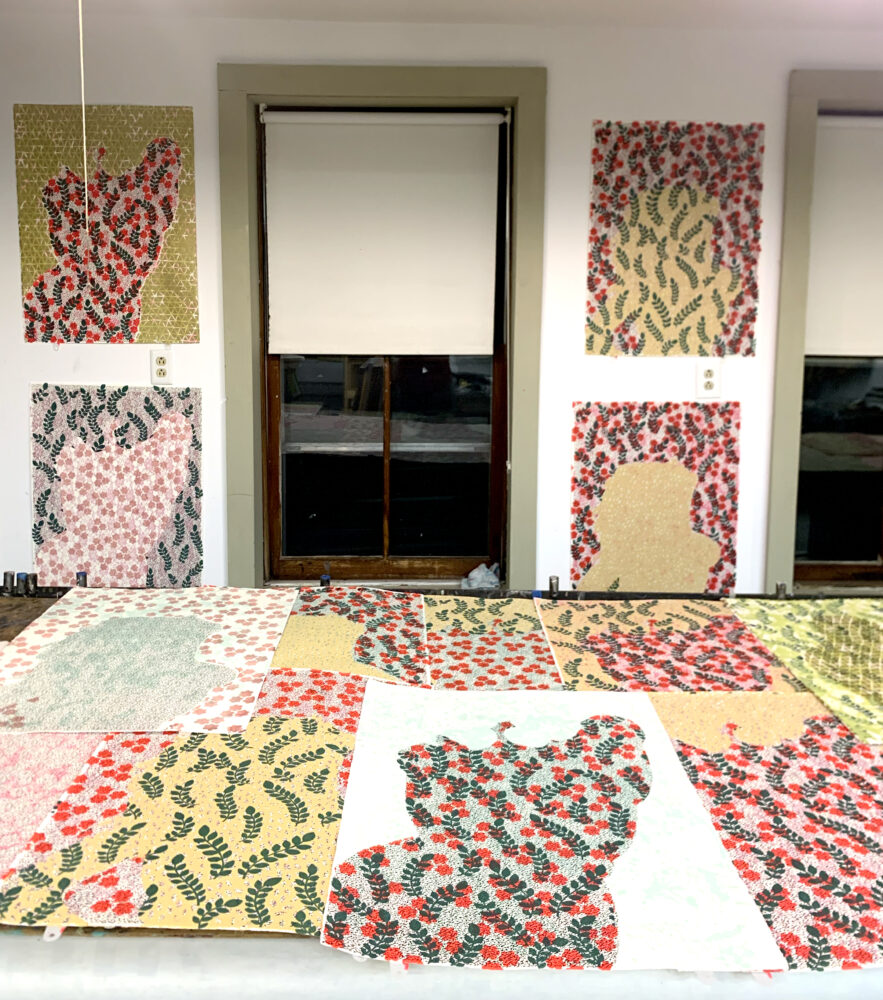
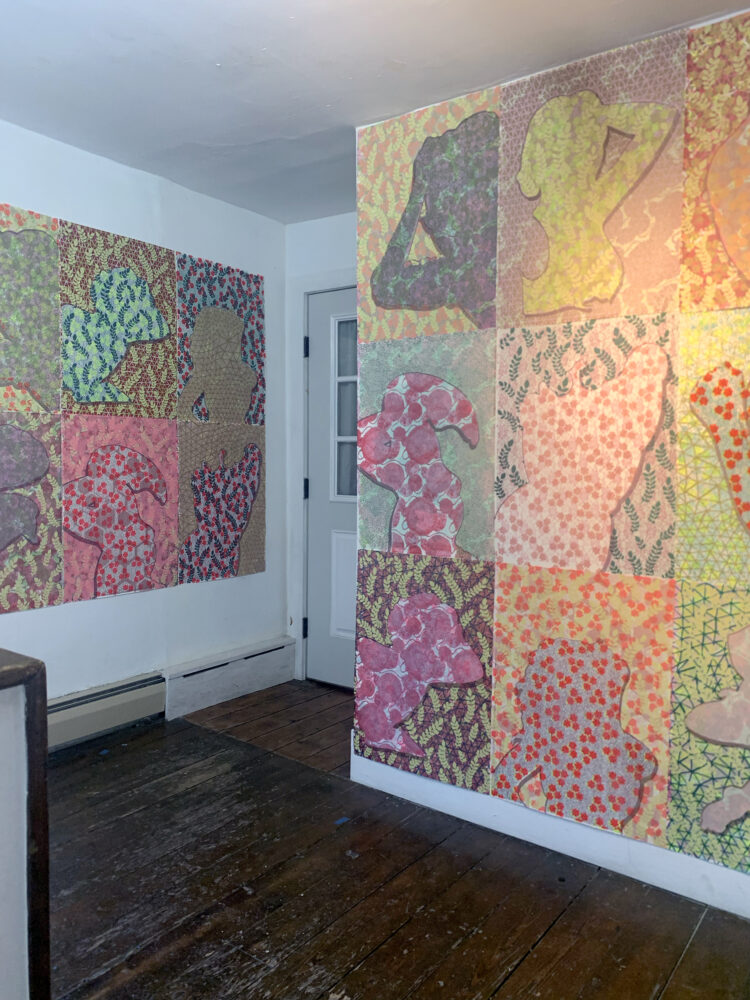
The last project I worked on, in just the last few days of my time at WSW, was another repeat print project, titled “Women Reading”. Similar to “Cultivating the Garden Together”, this print edition also included figures in silhouette, this time, all women reading books. The flower and leaf patterns in the background, overlapping one another create an illusion of depth, like this imaginary environment continues back into space. The leaf patterns include text from Audre Lorde’s uses of the erotic, cut into the leaf shapes, not really readable, but present. This one I made with the intention of it becoming a wall installation and covered my studio wall during Peekskill open studios earlier in the summer.
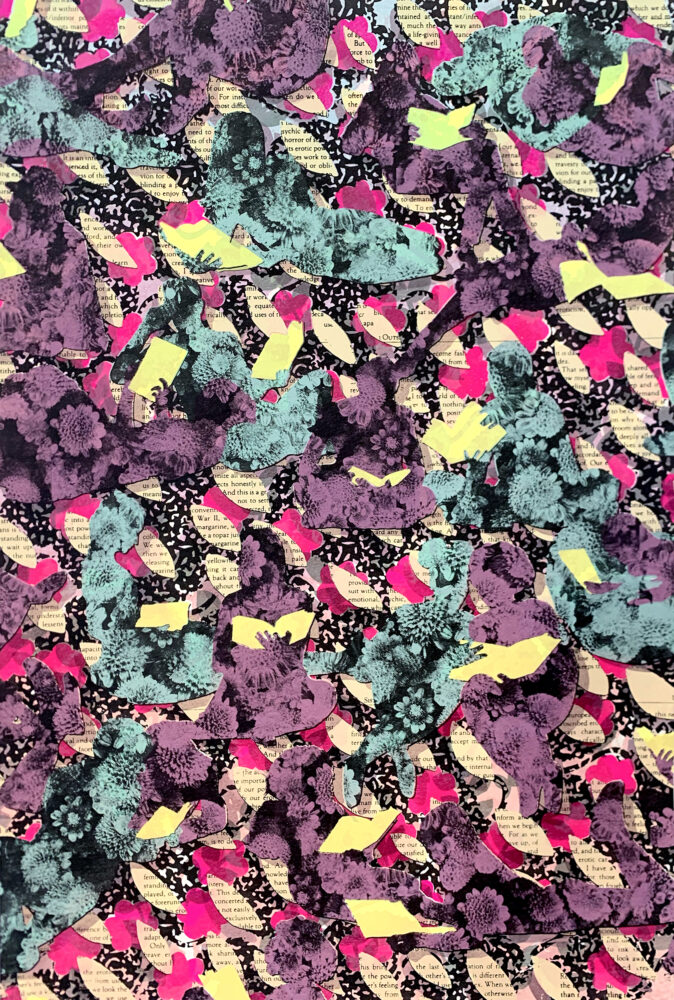
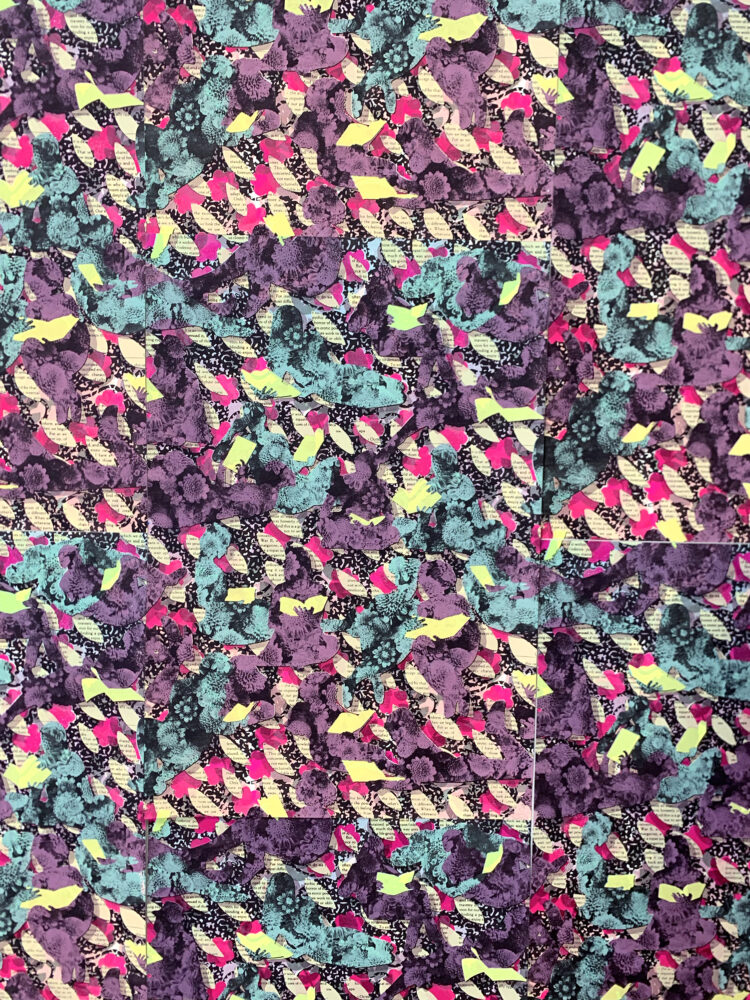
I have always used pattern in my work forever. There is something I liked about the repetition and accumulation. Making this work also helped me think more about why I gravitate towards it. Pattern has been a way of accumulating mass, making something big out of something small and of covering. I try to get myself to work against the scarcity mindset and find ways to generate abundance. By covering the surface in pattern, I am emphasizing the interconnectedness of all things and attempting to create transformation through repetition in which the body(ies) and environment become one. We are all connected through the air and water. On the individual level, I am also exploring building abundance within the body as a representation of joy, pleasure, and sensuality.
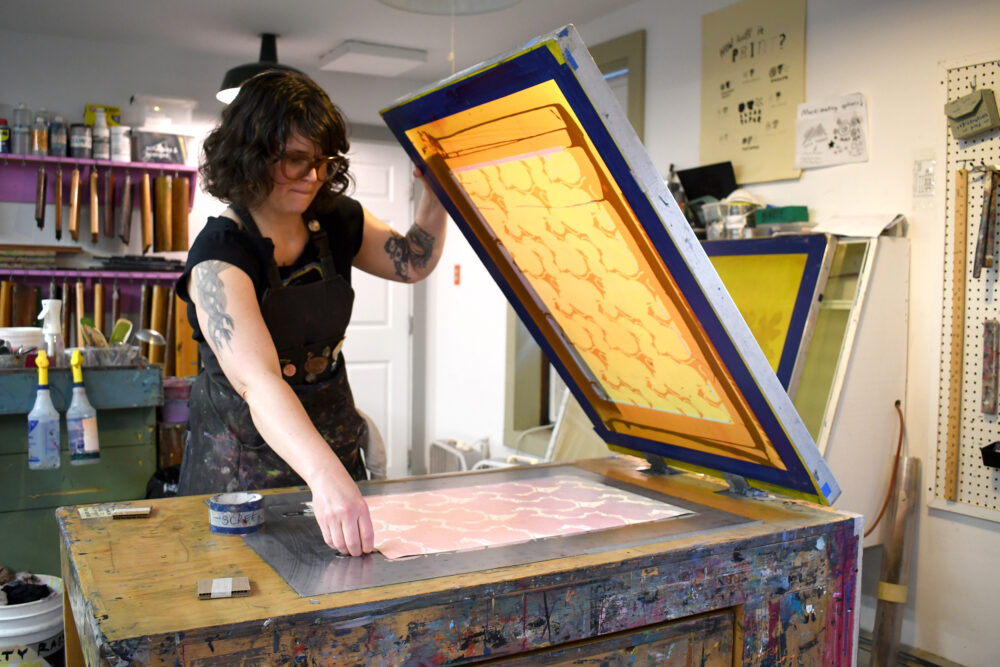
Part 2 coming soon – including more about the Art- in – Ed aspect of this residency.
